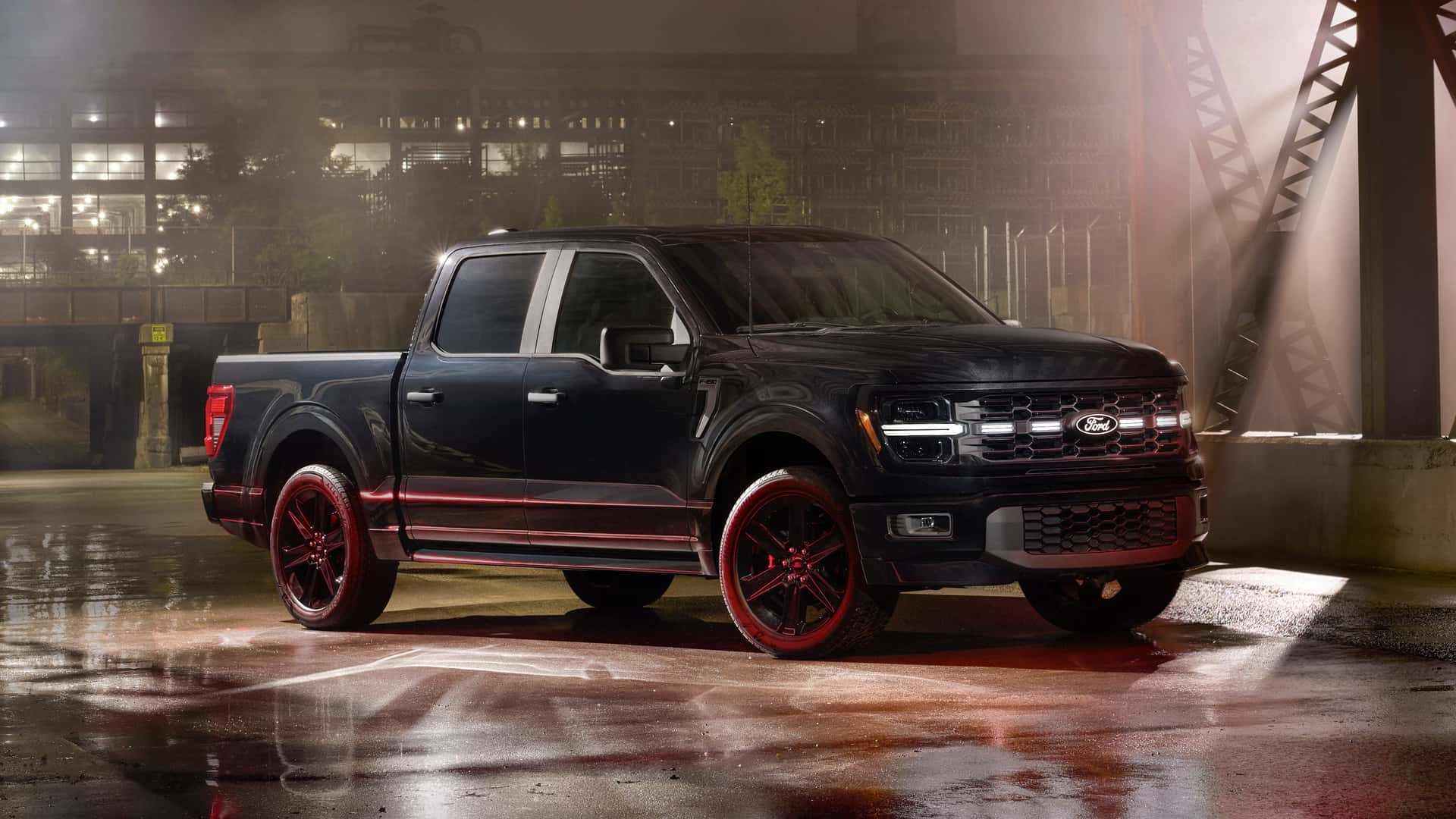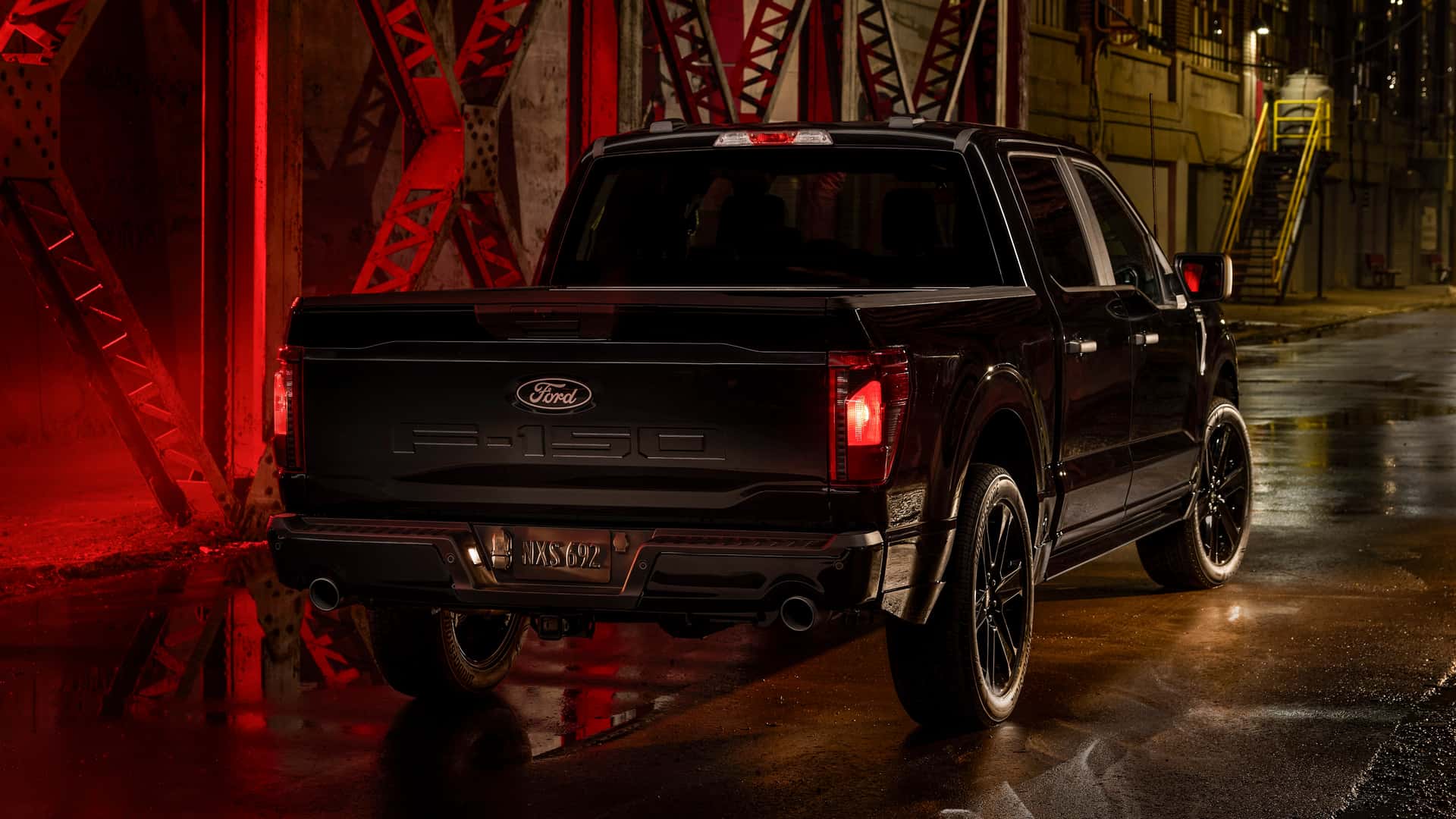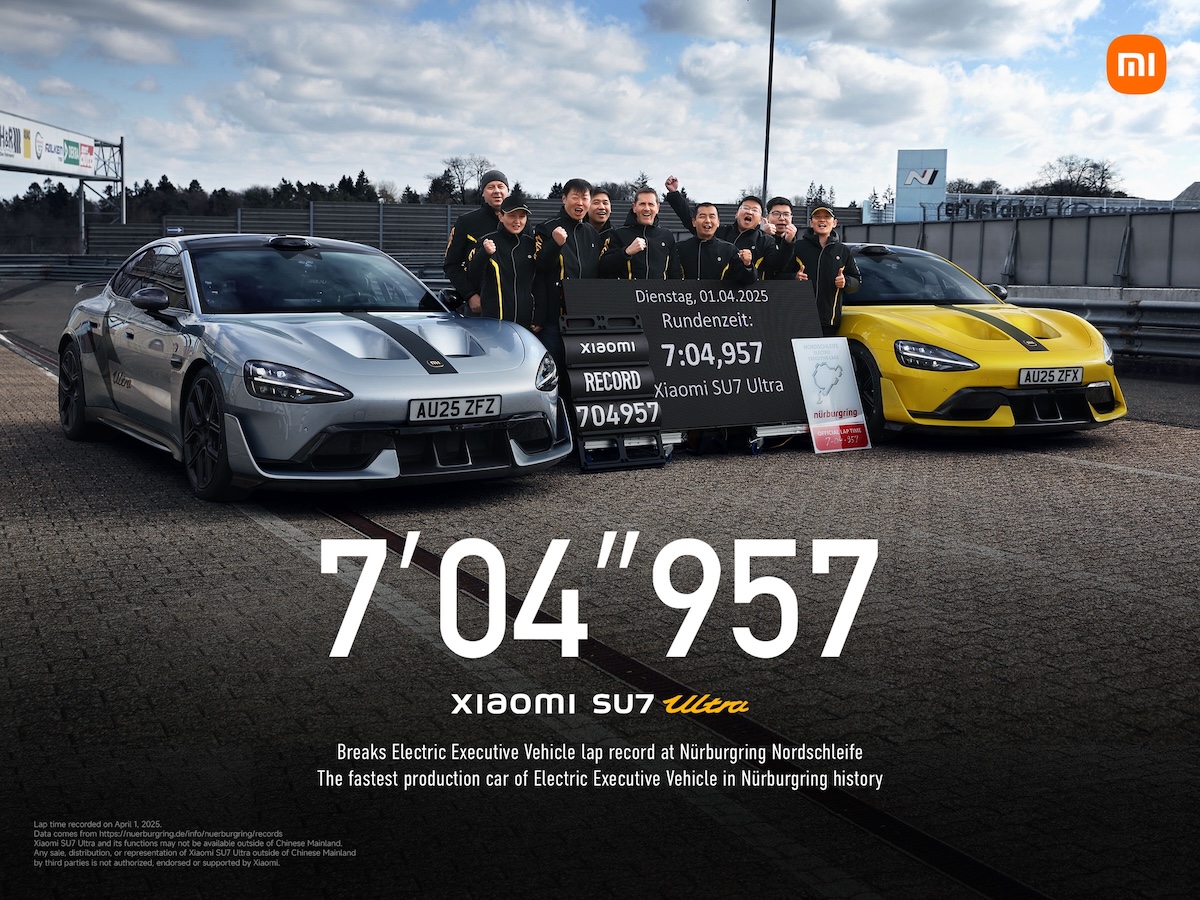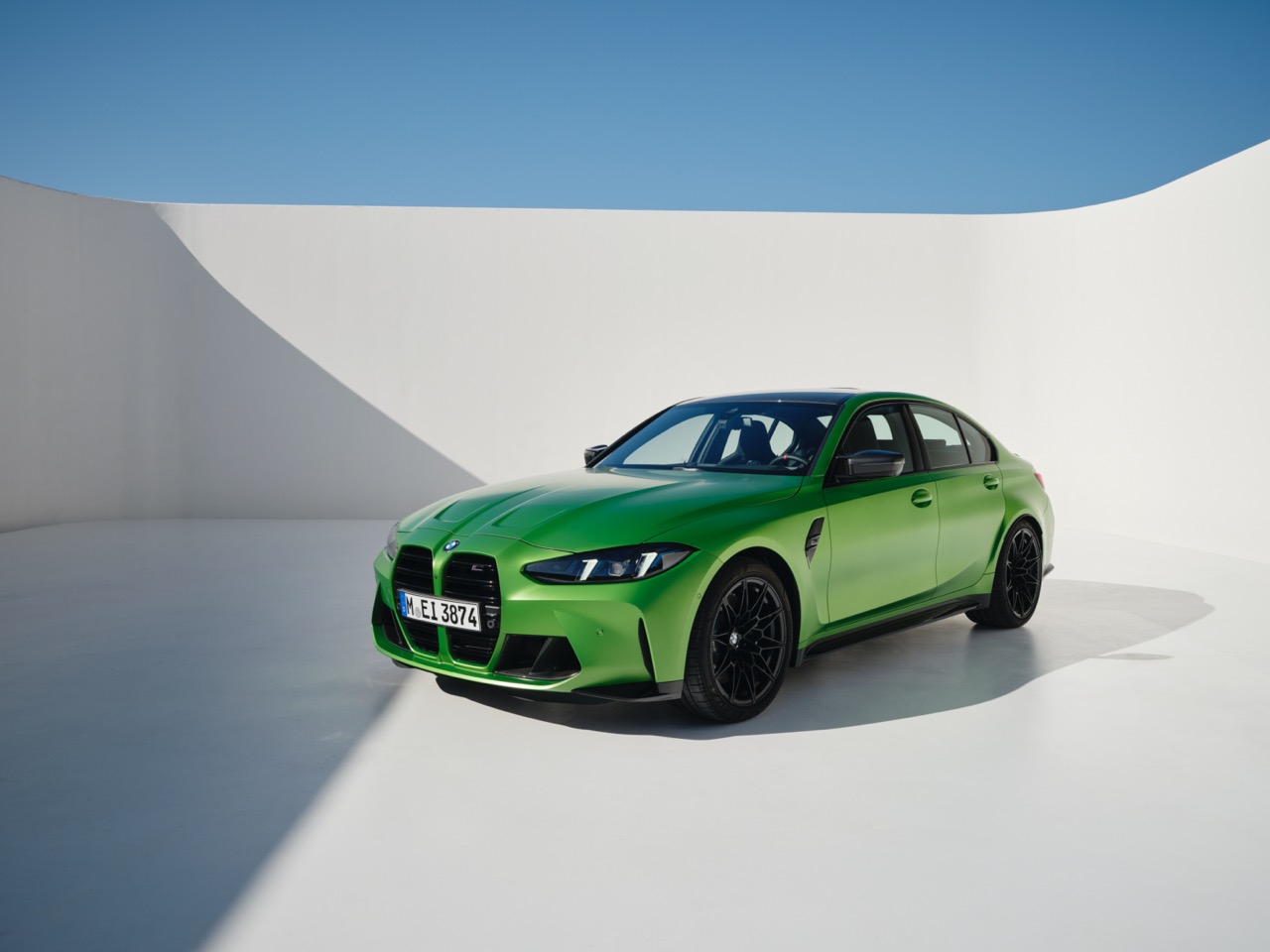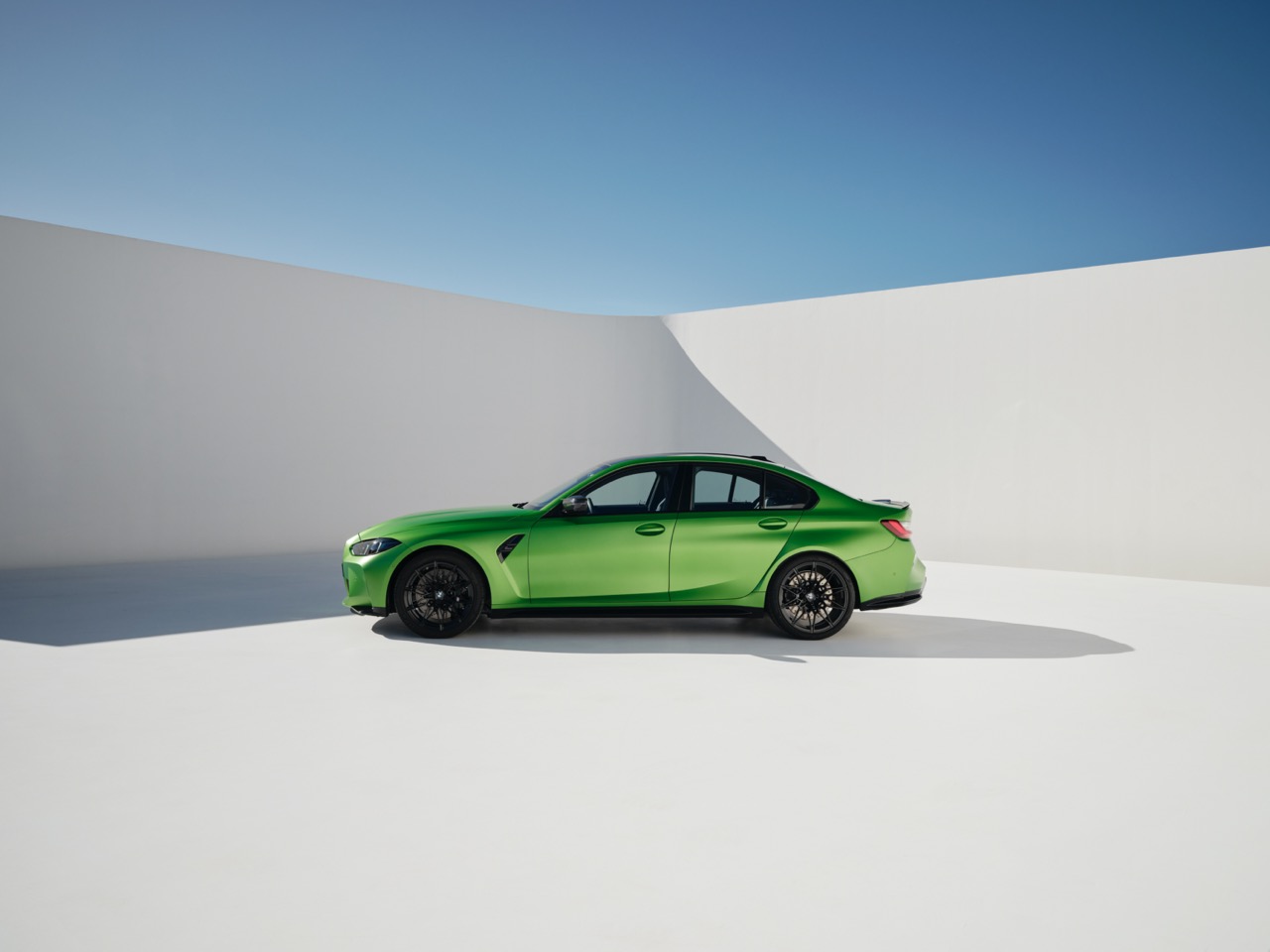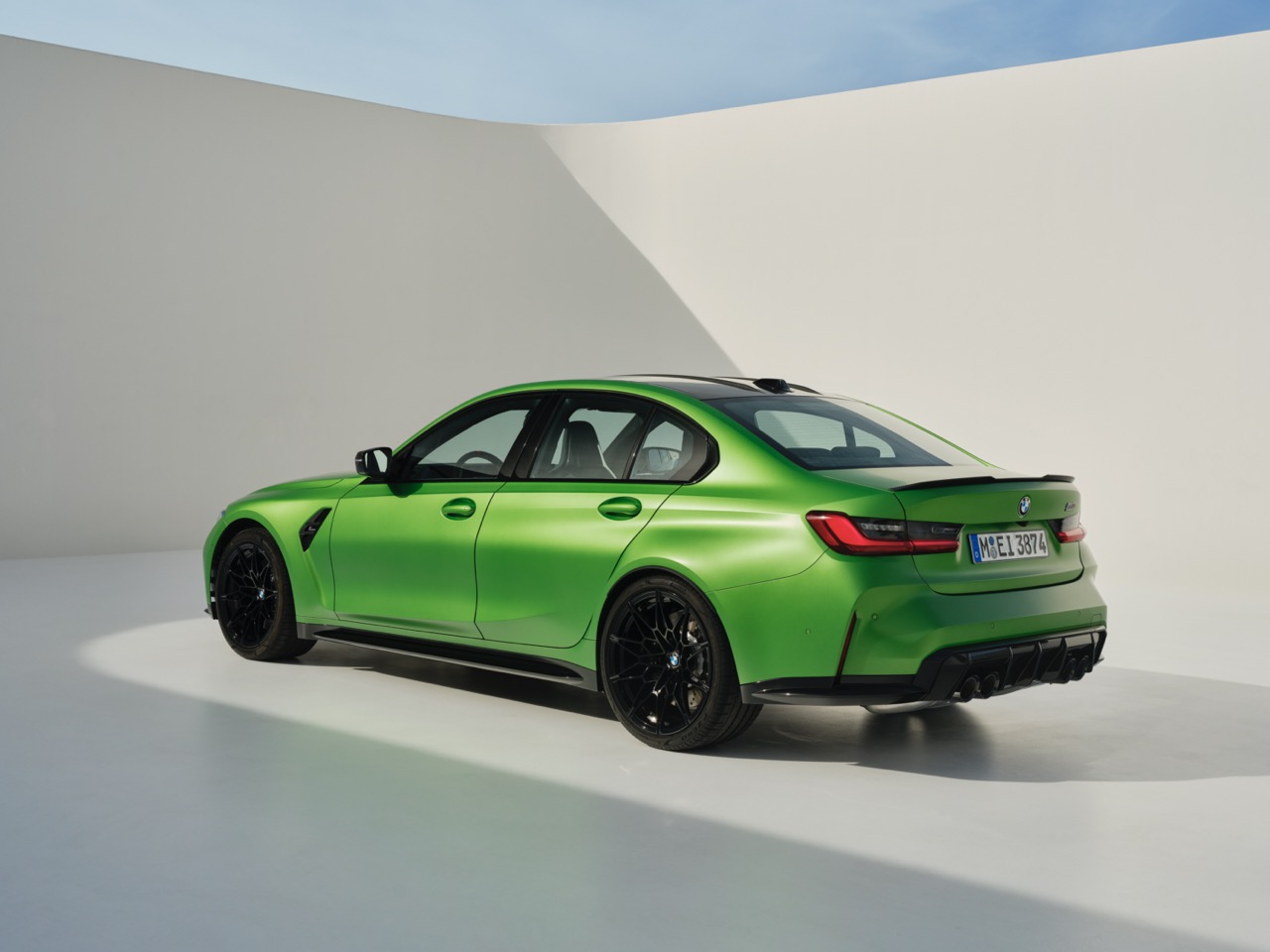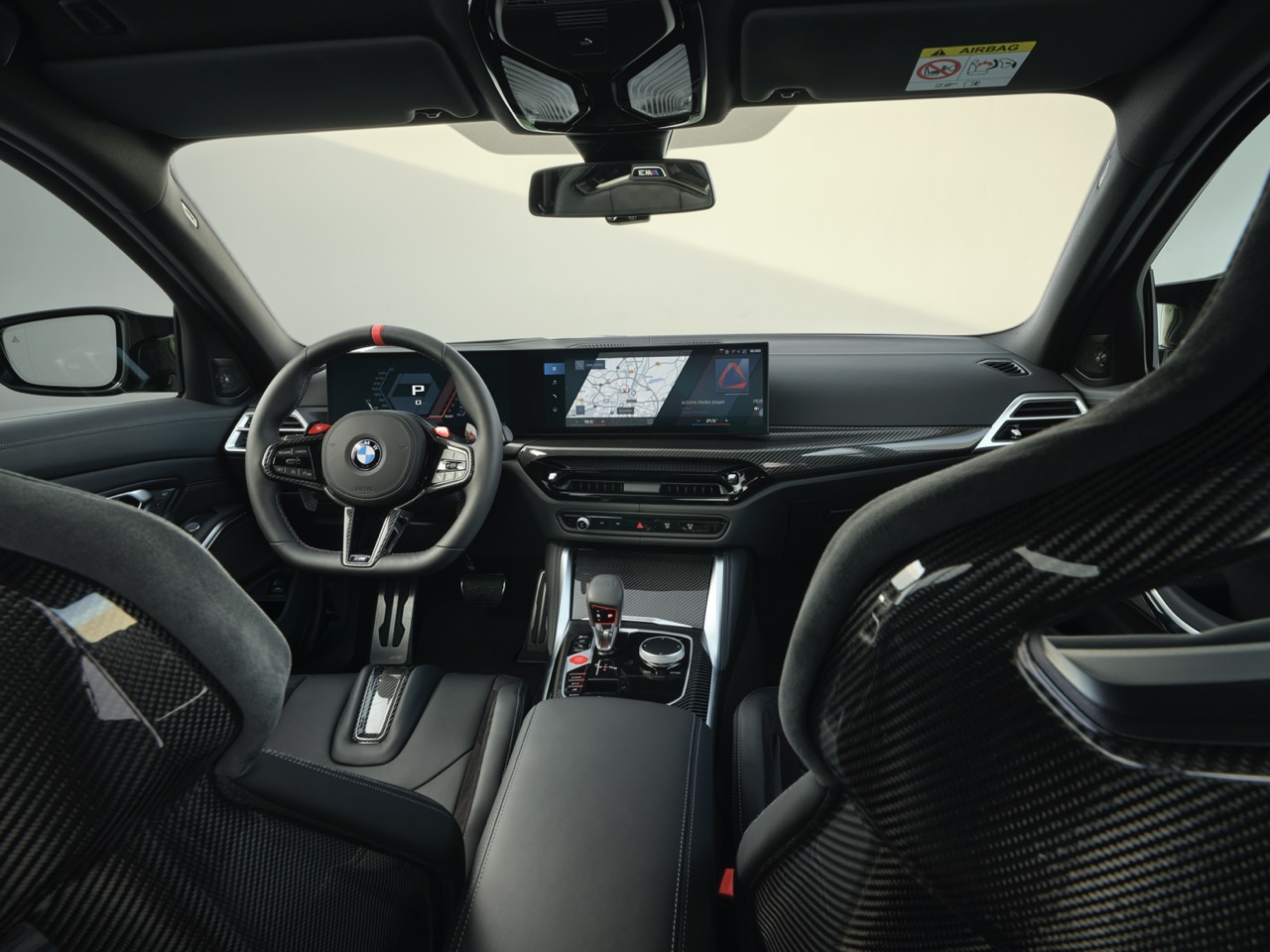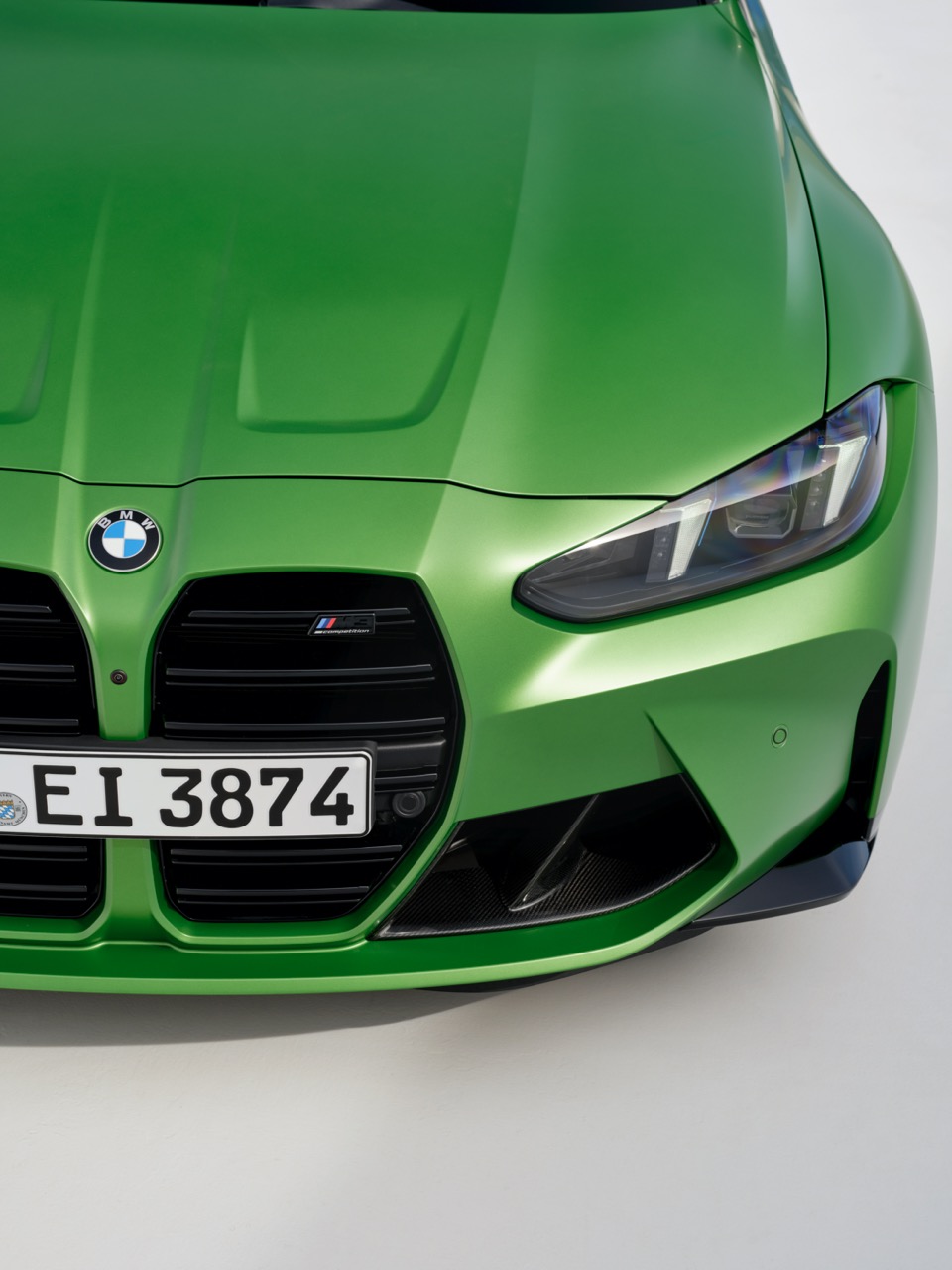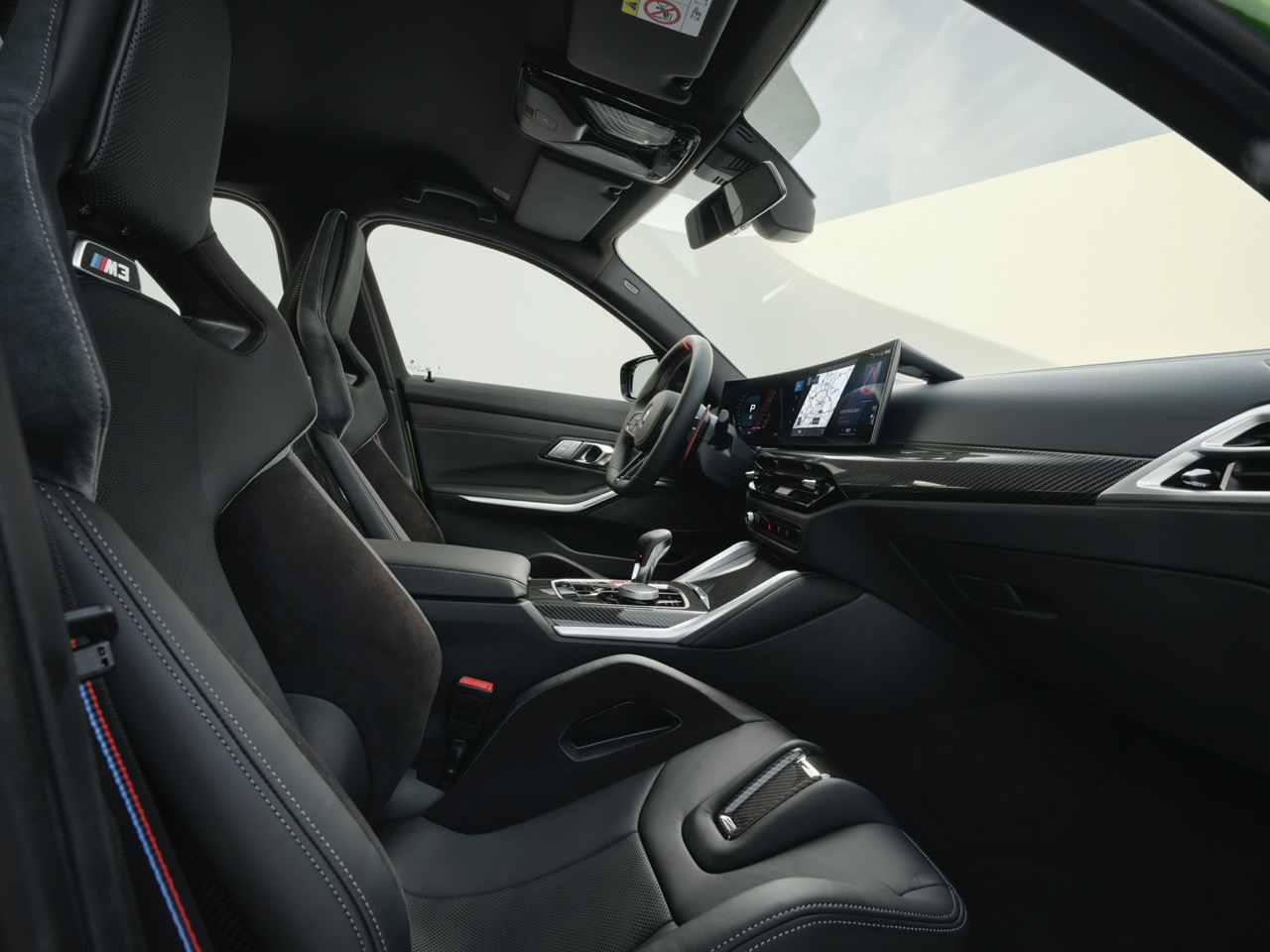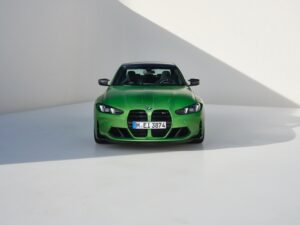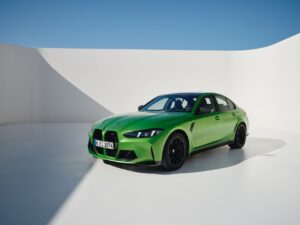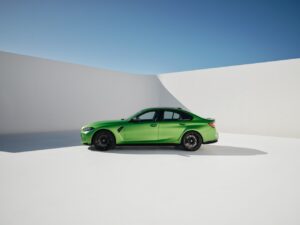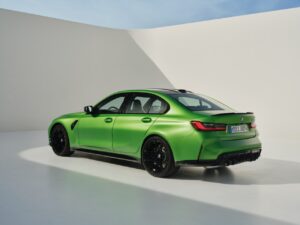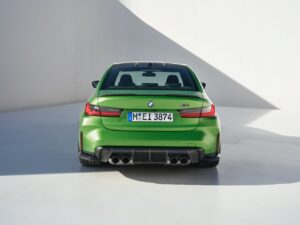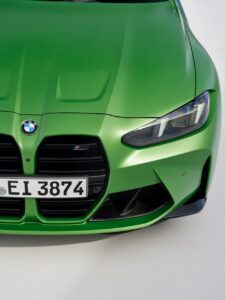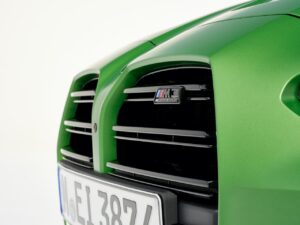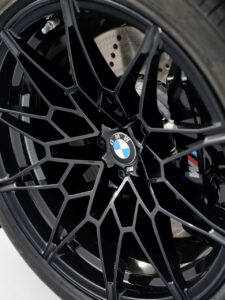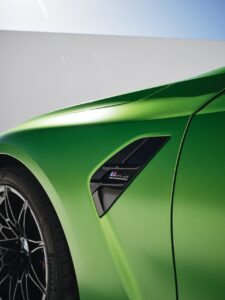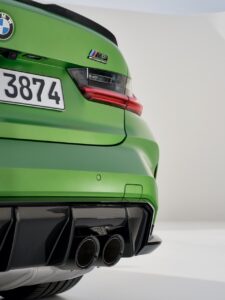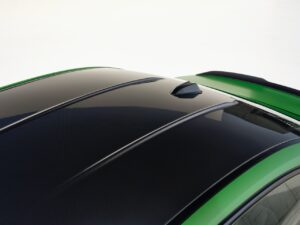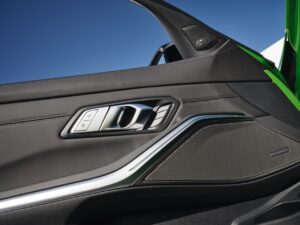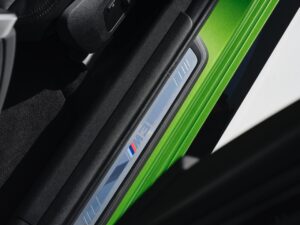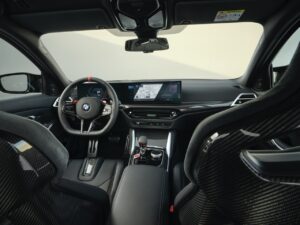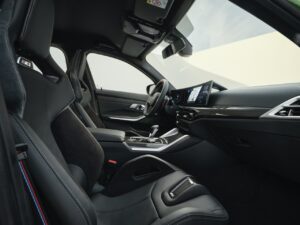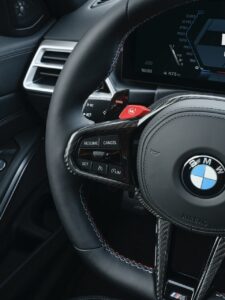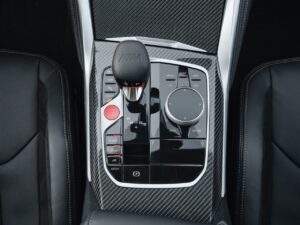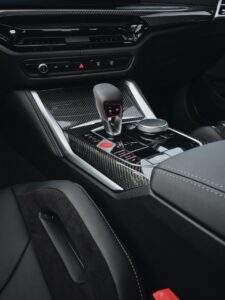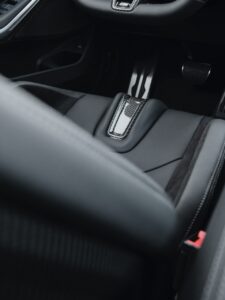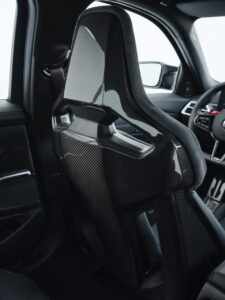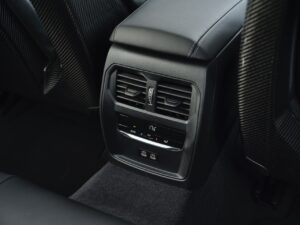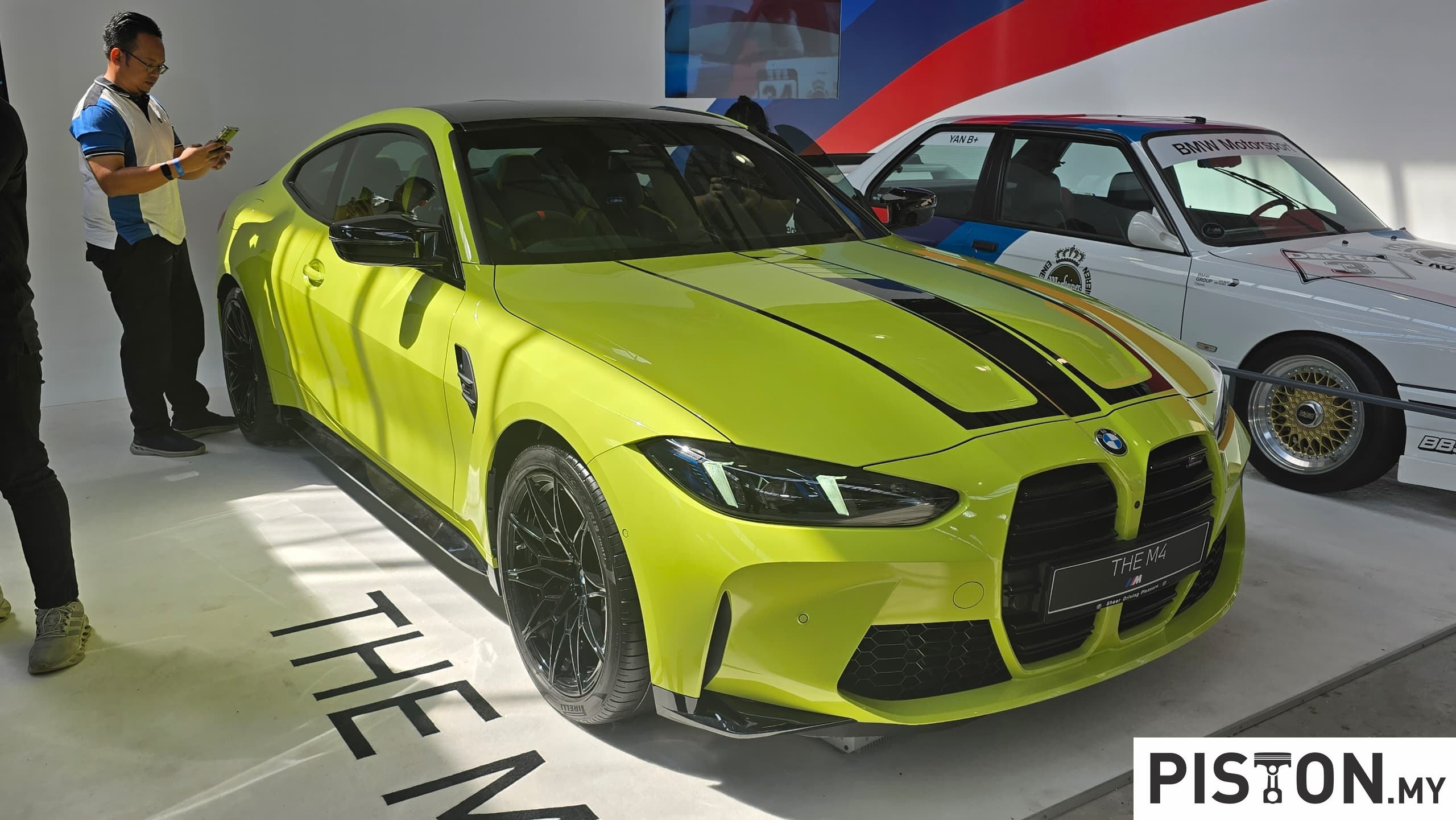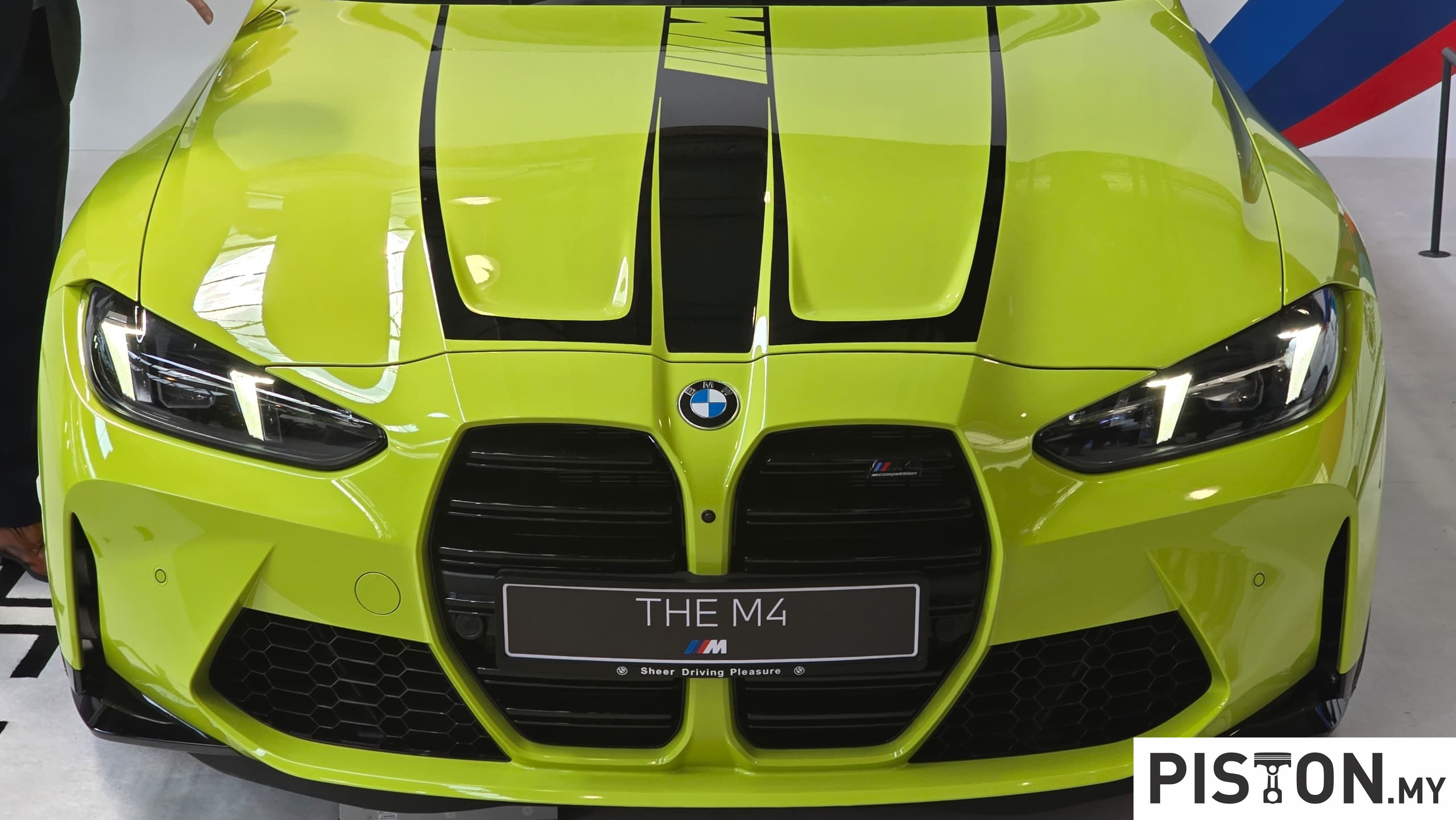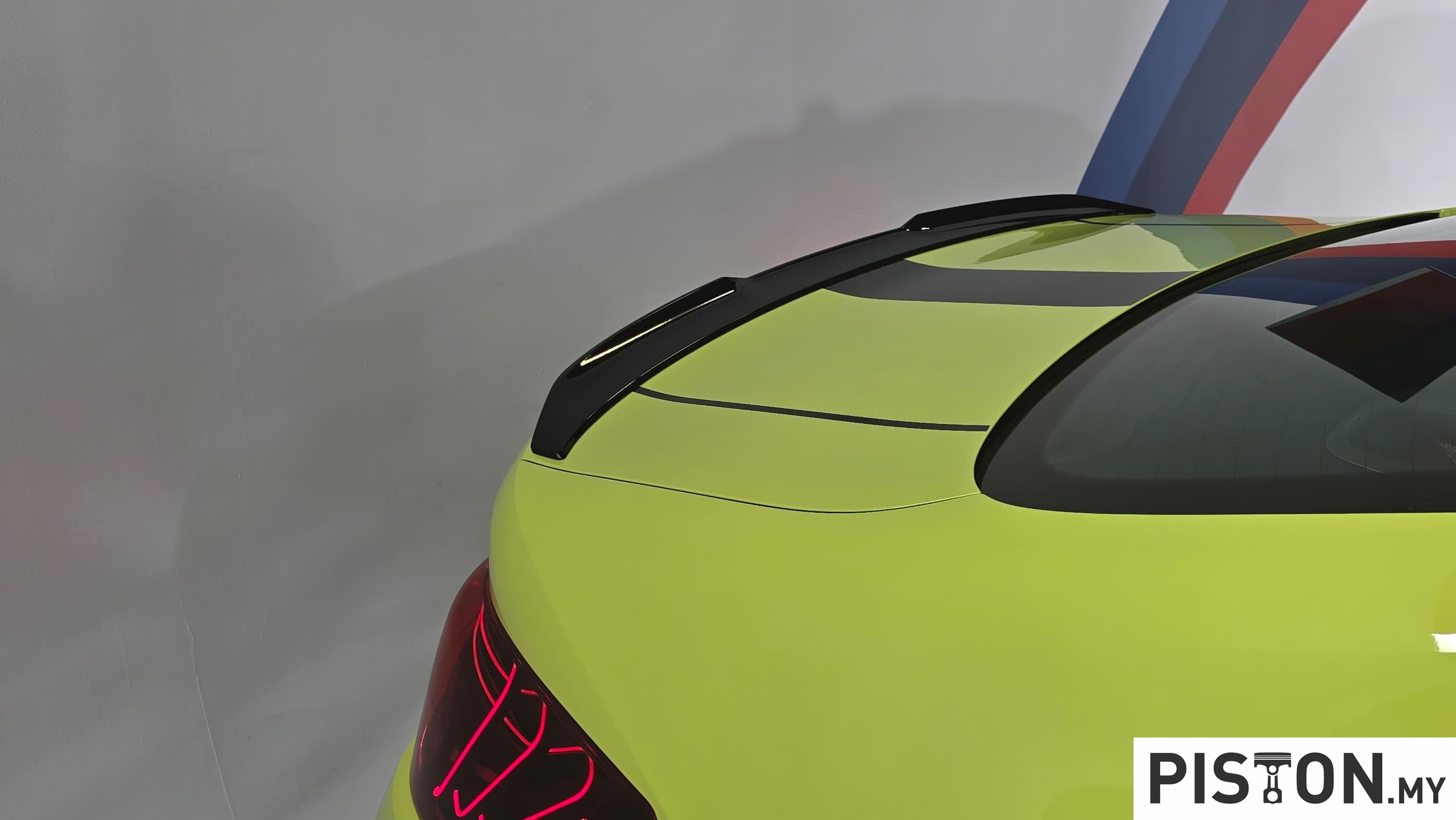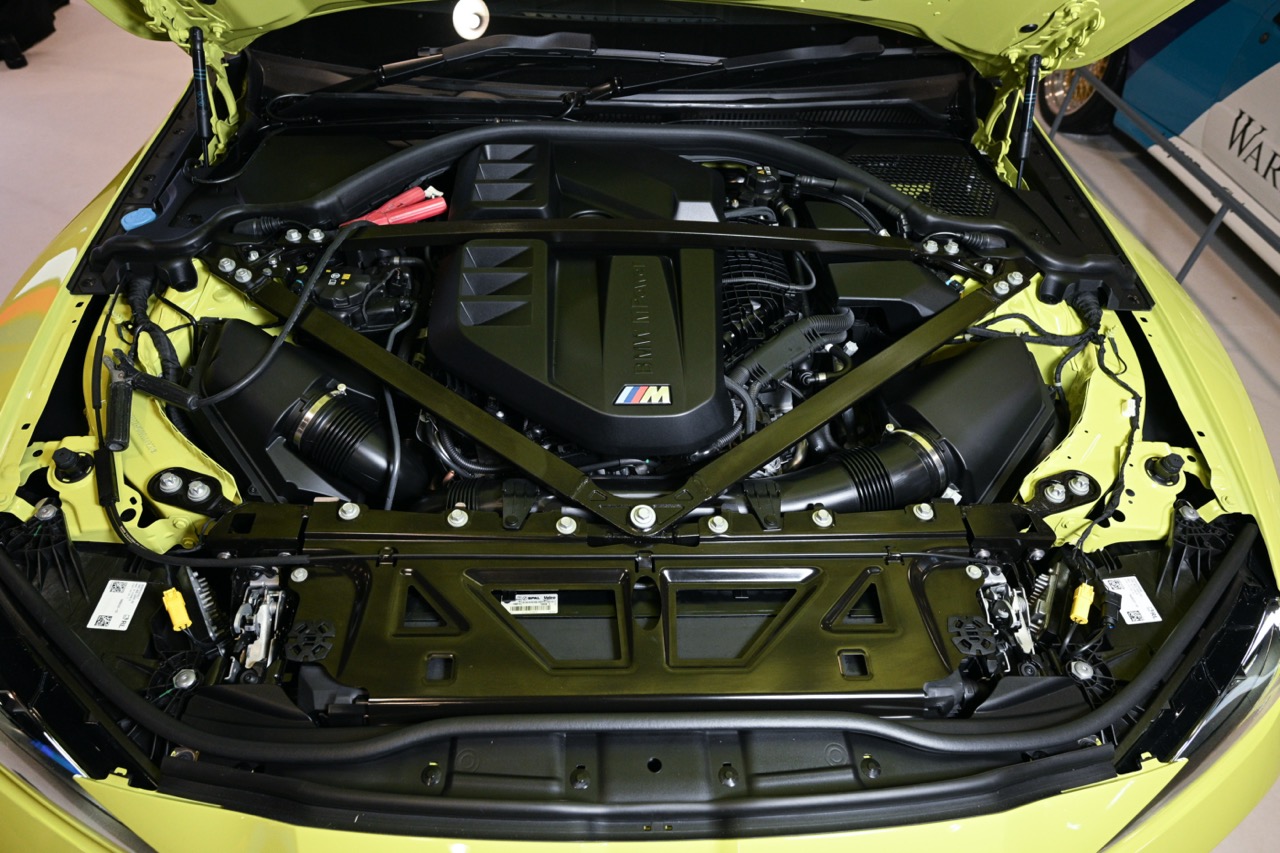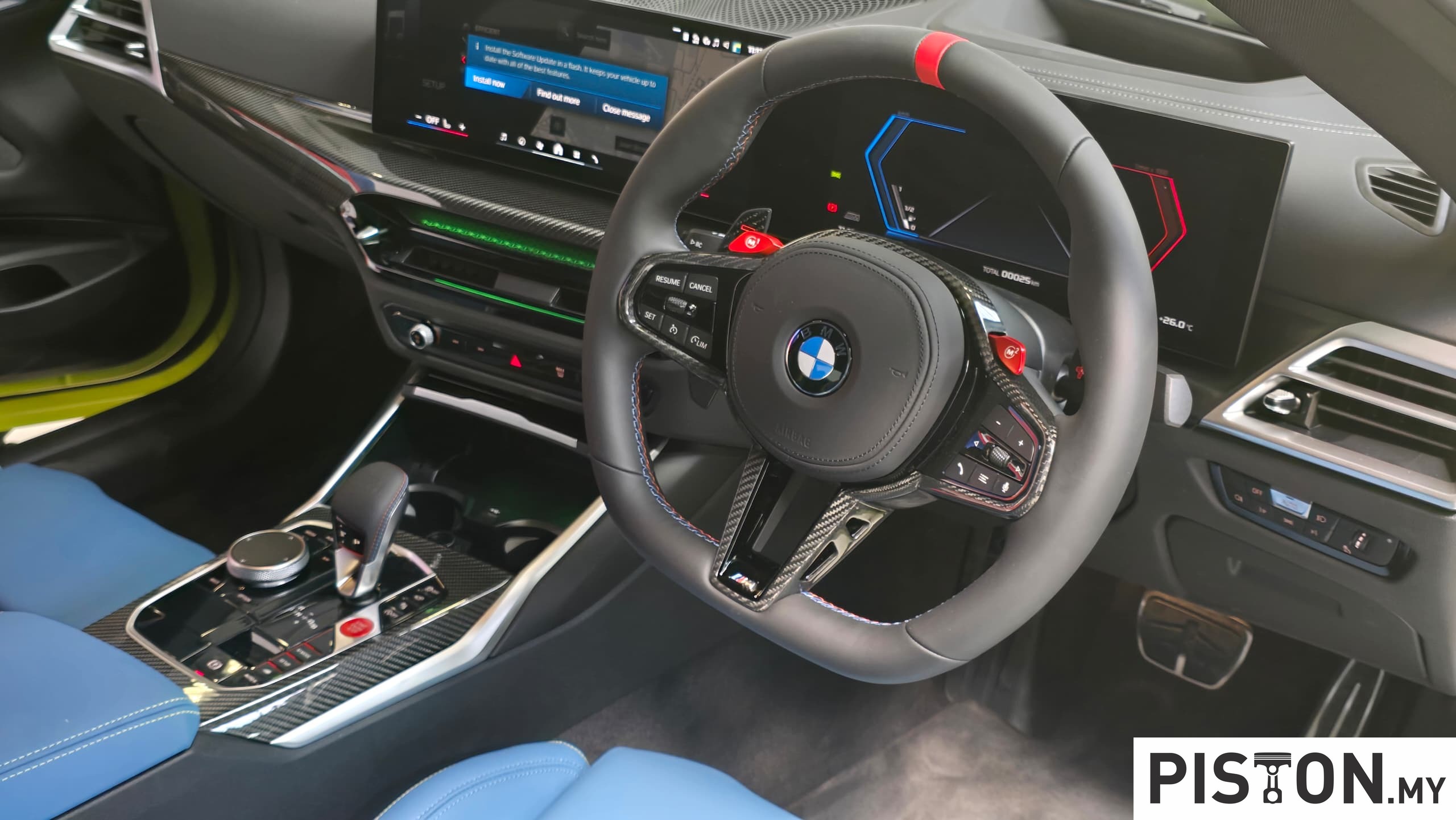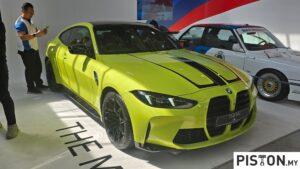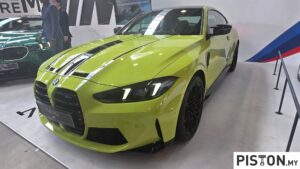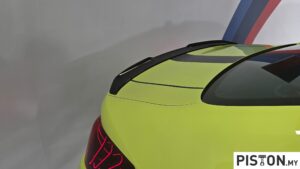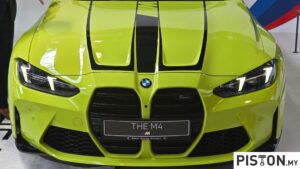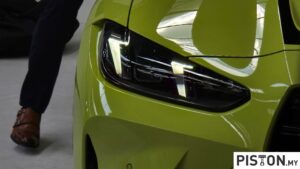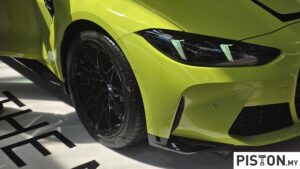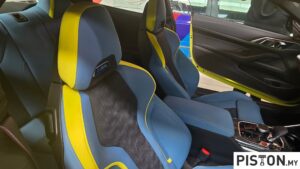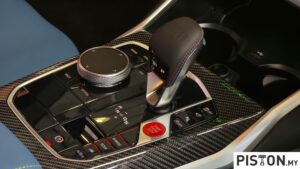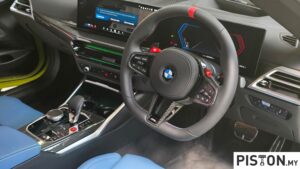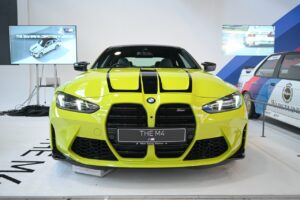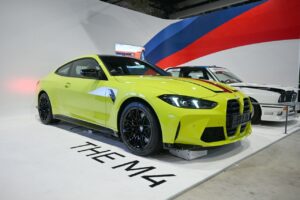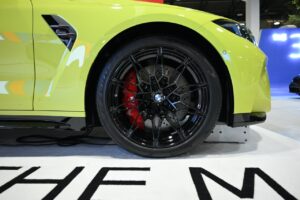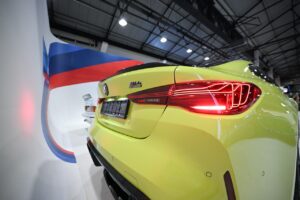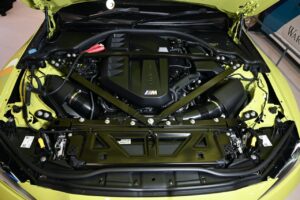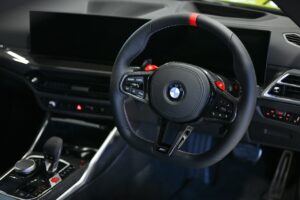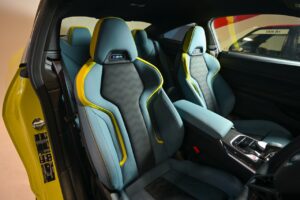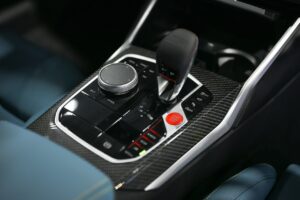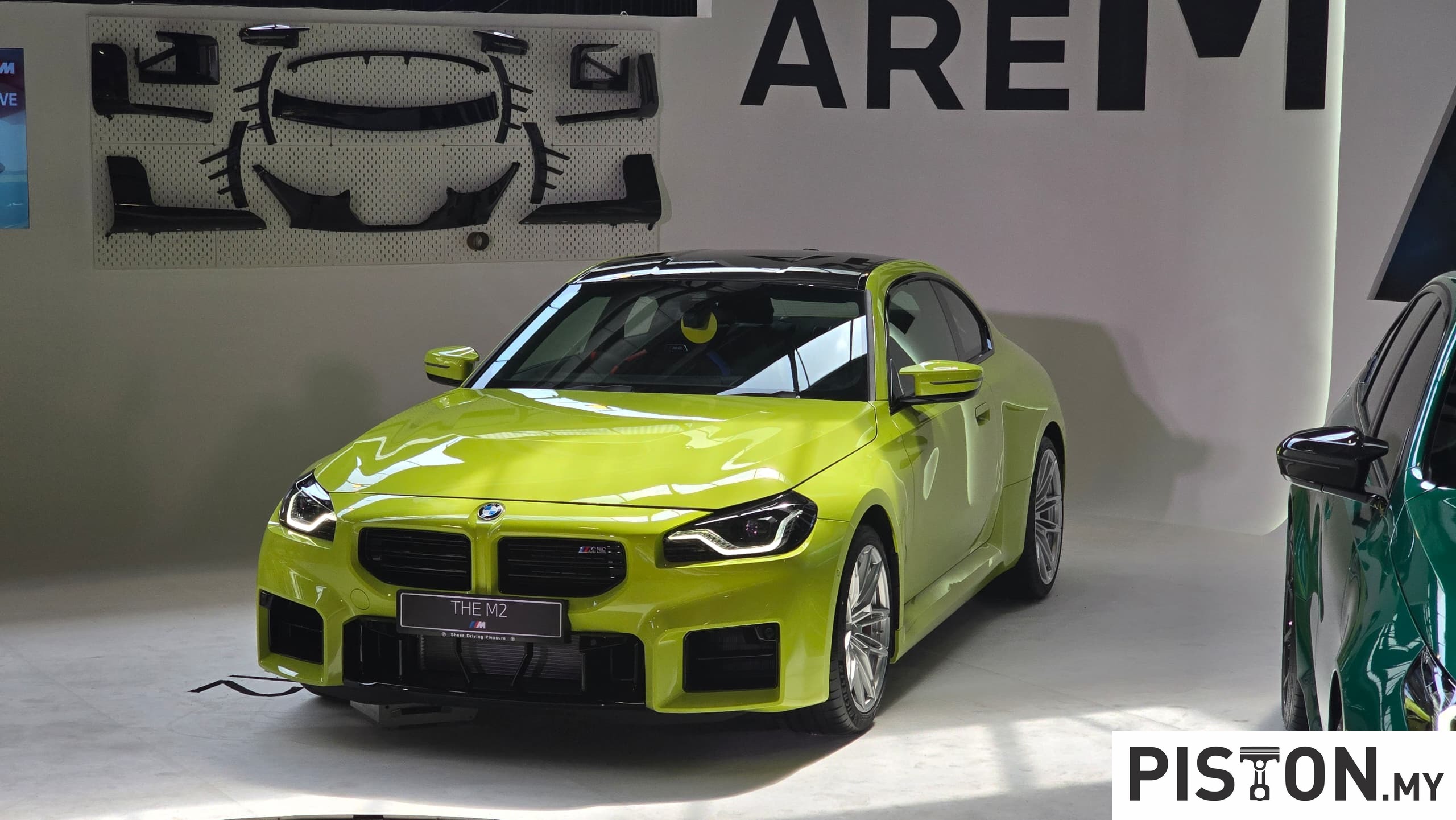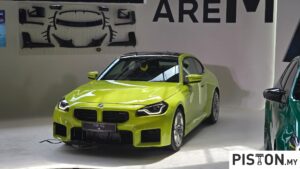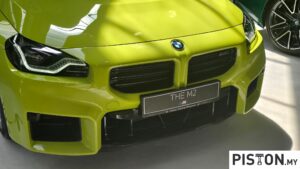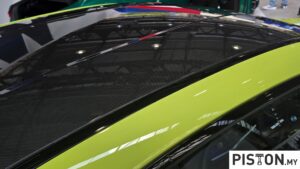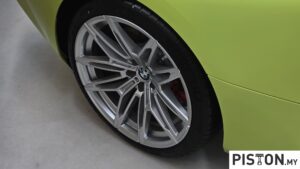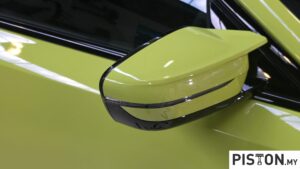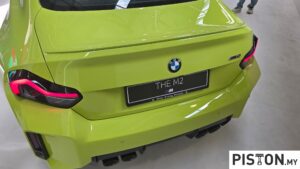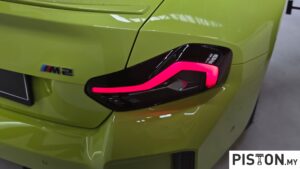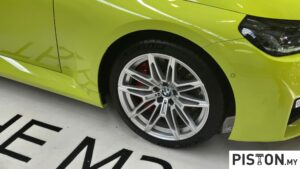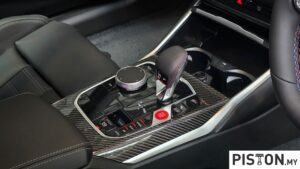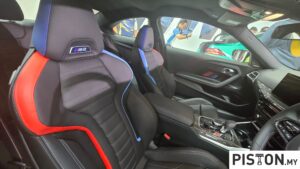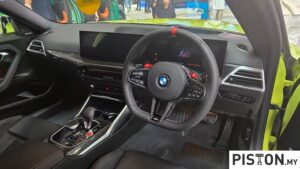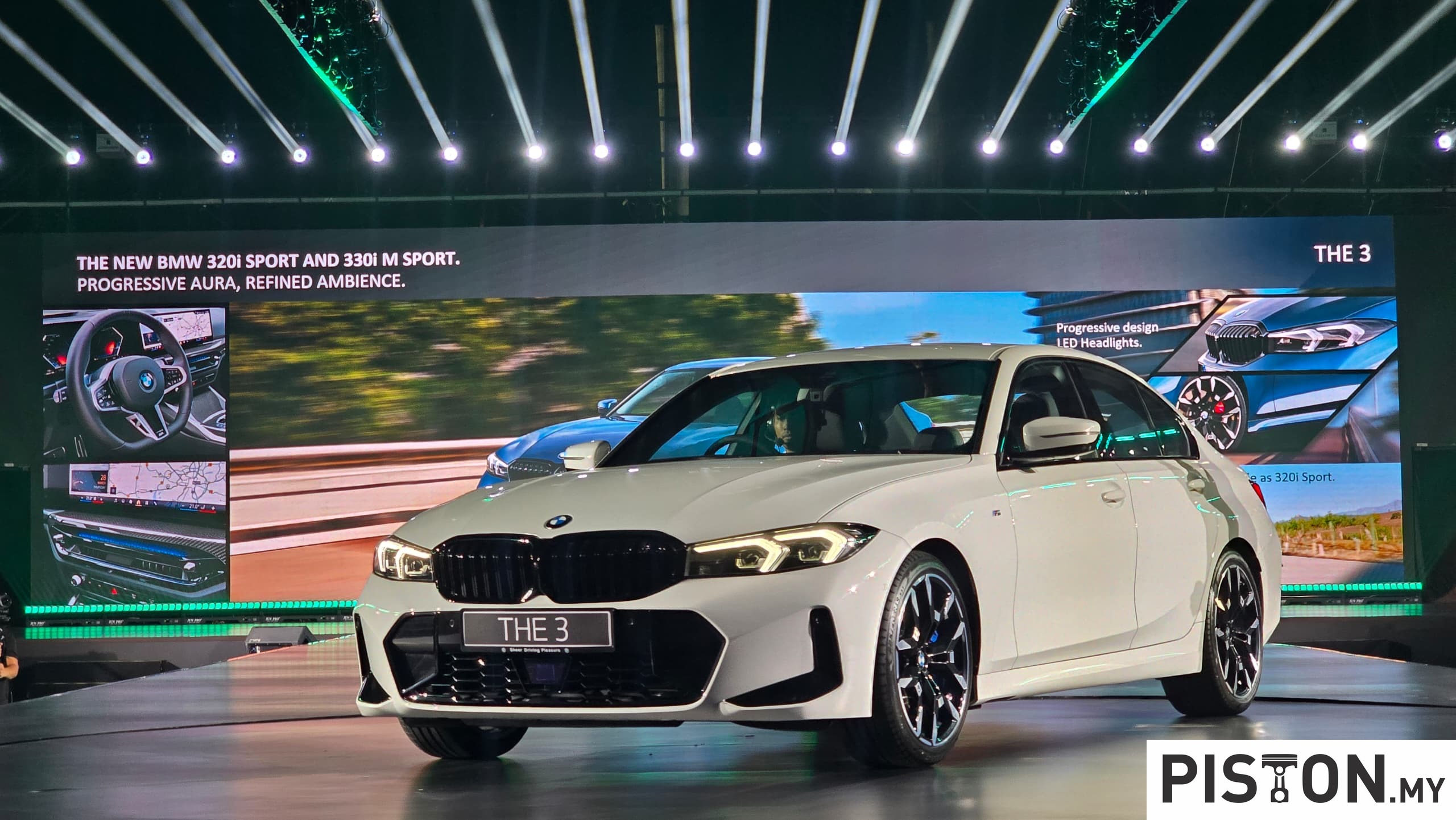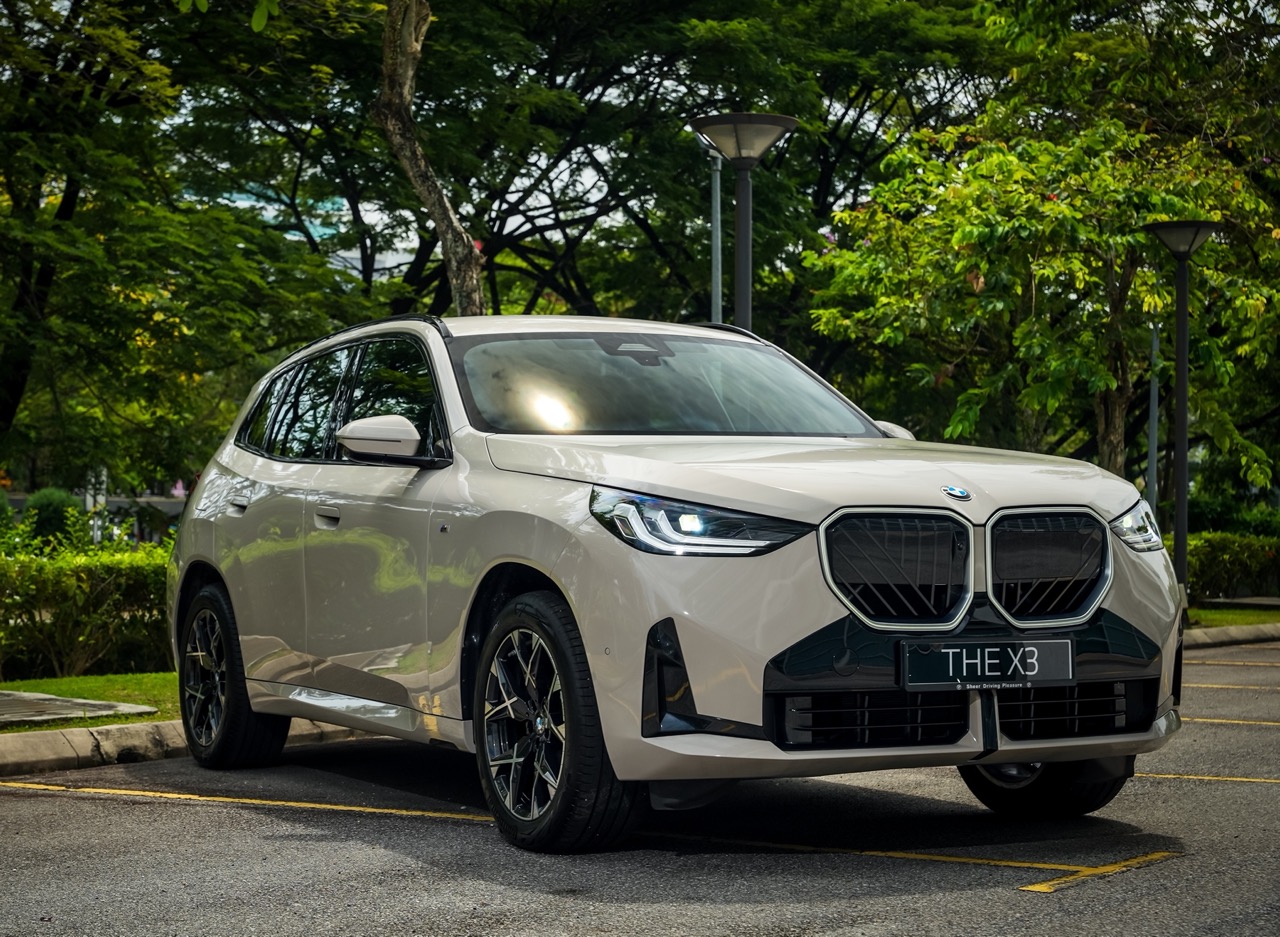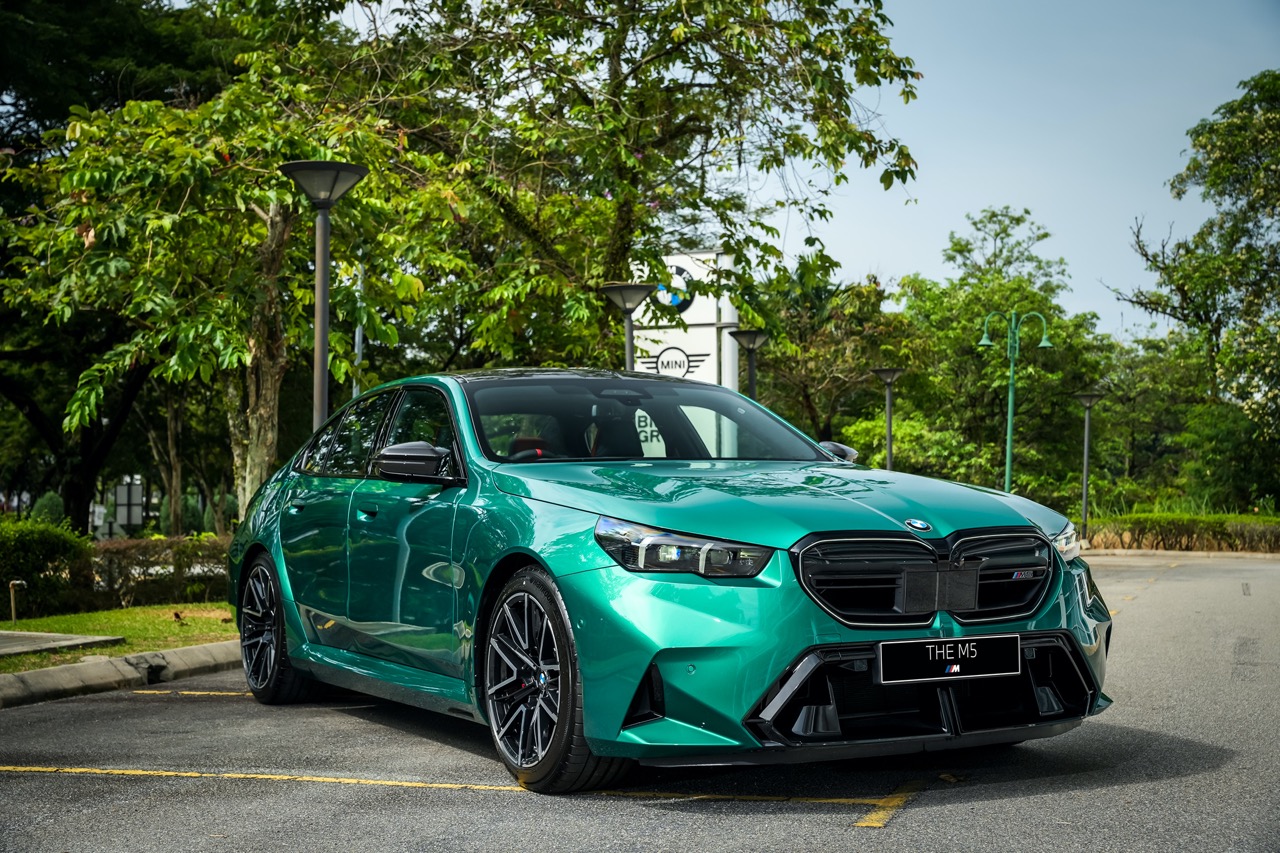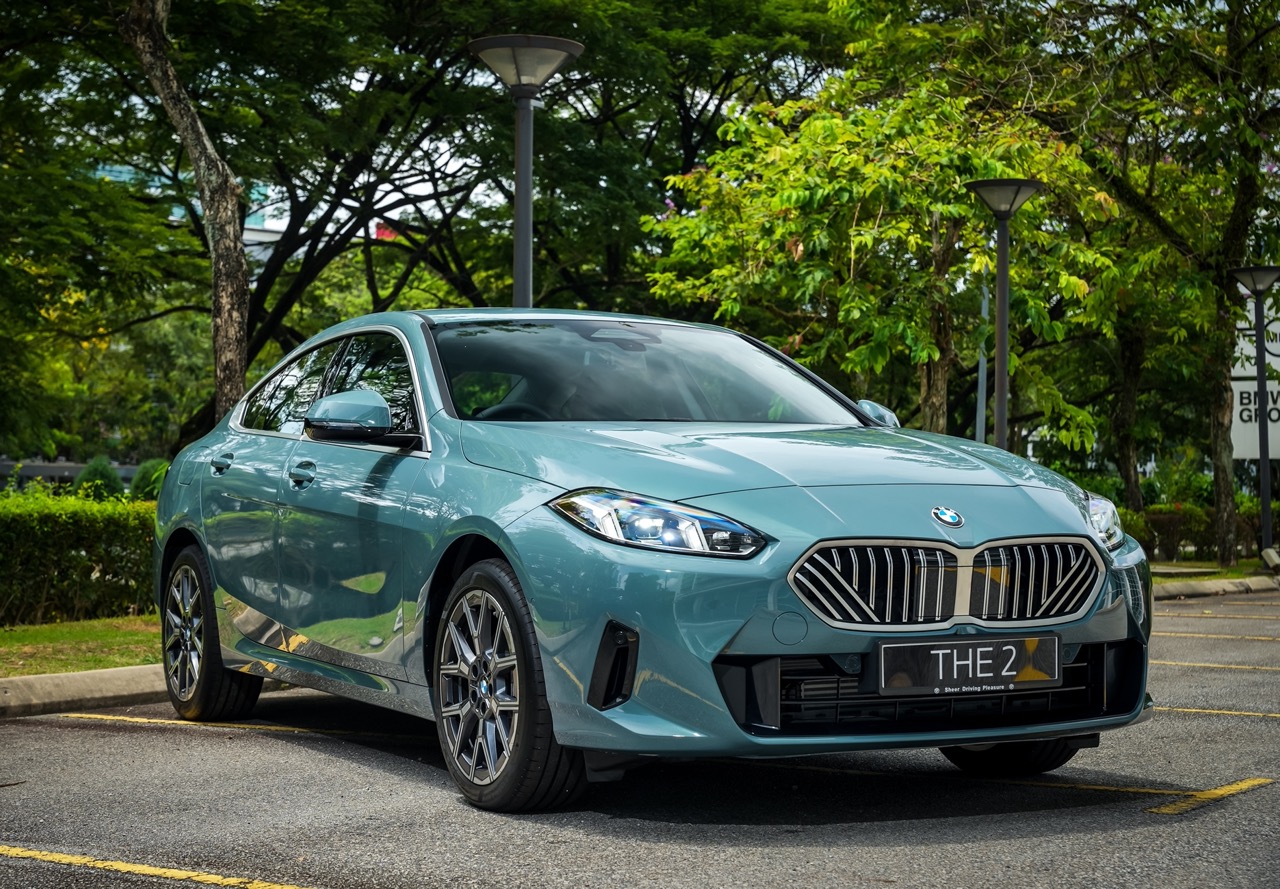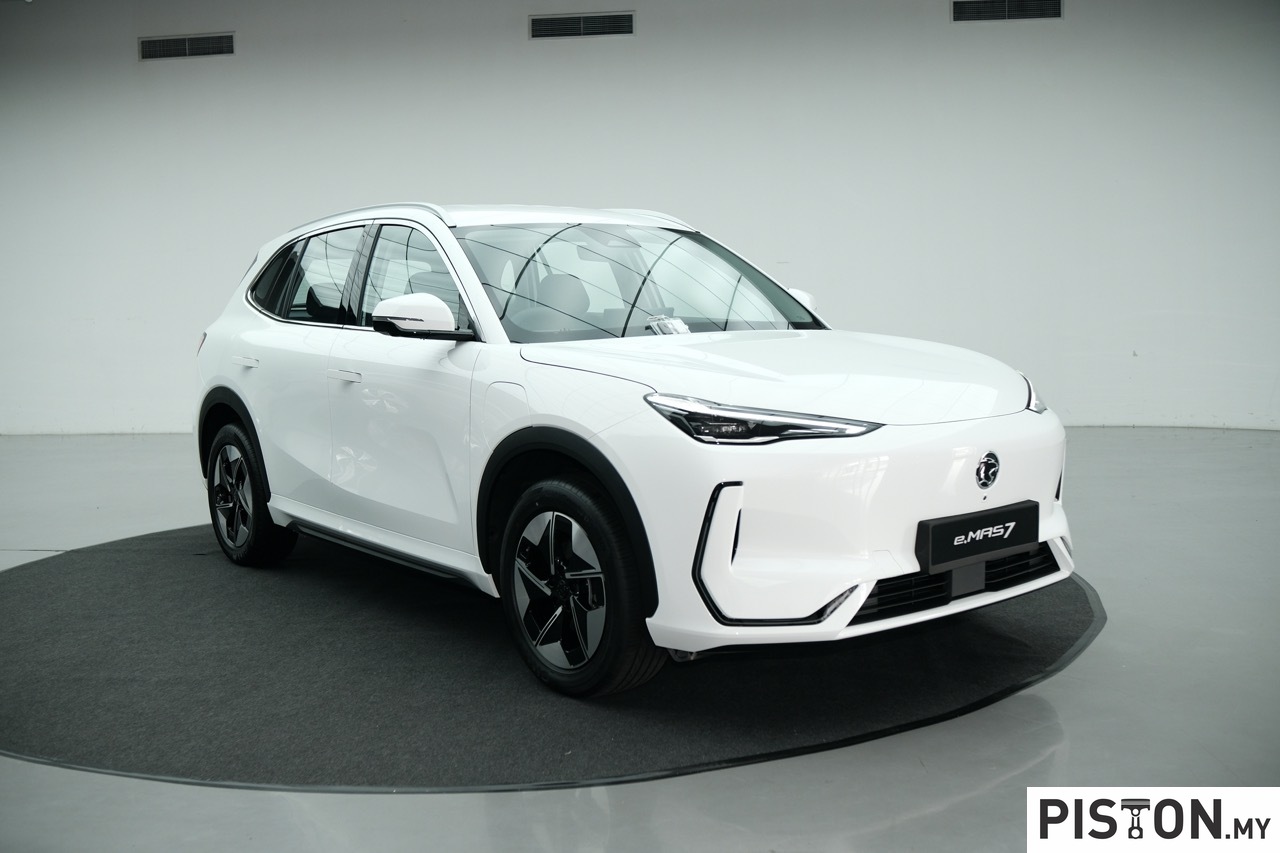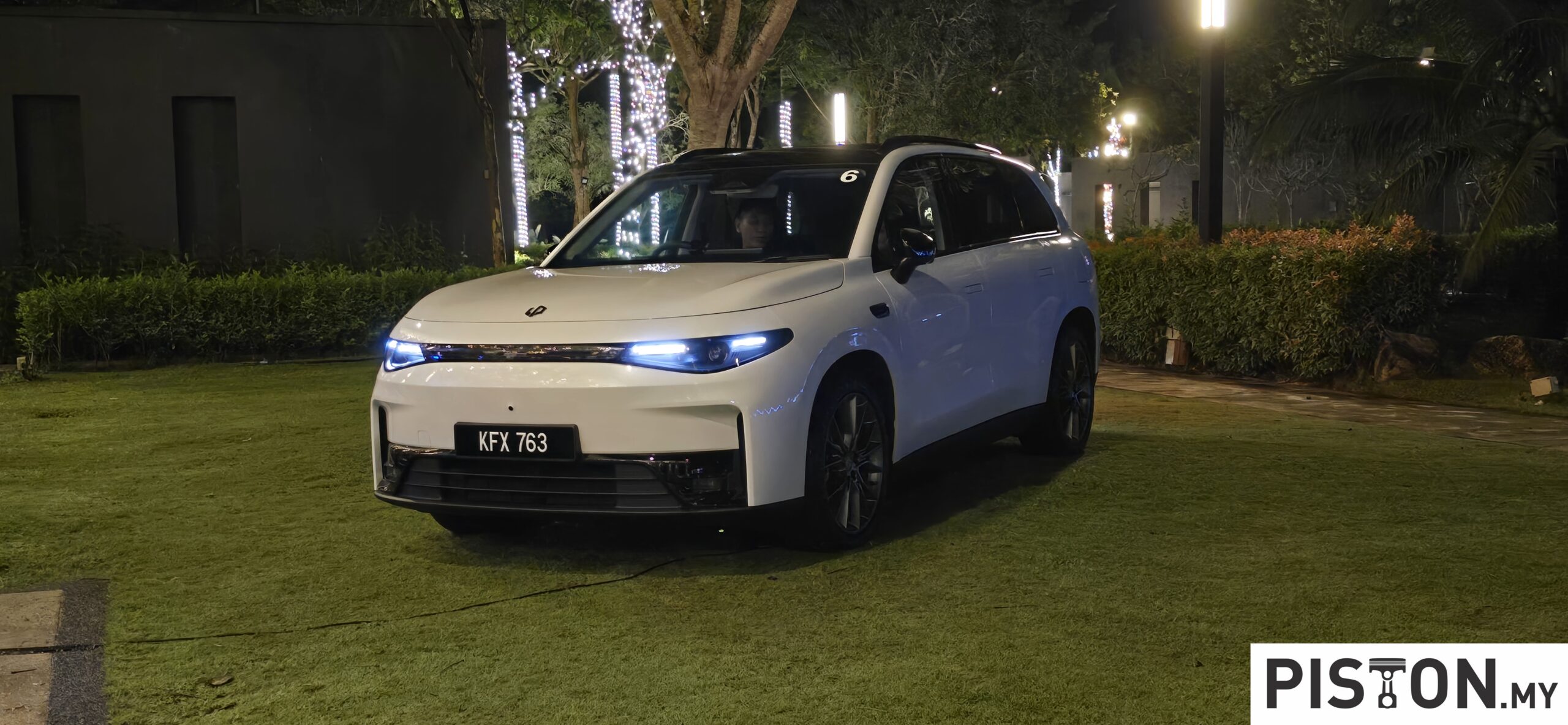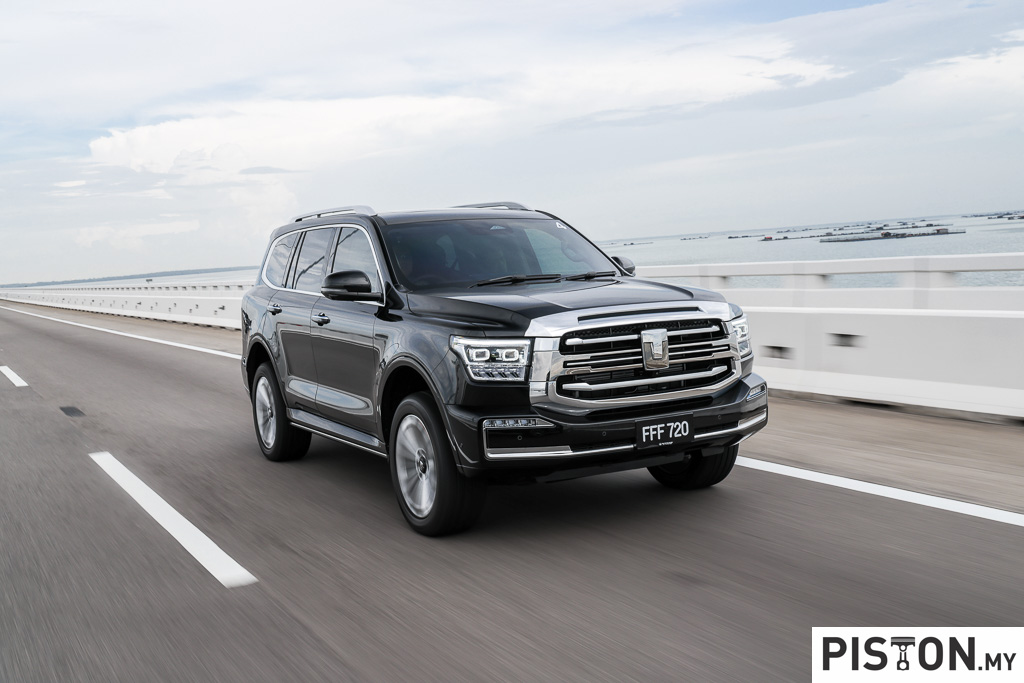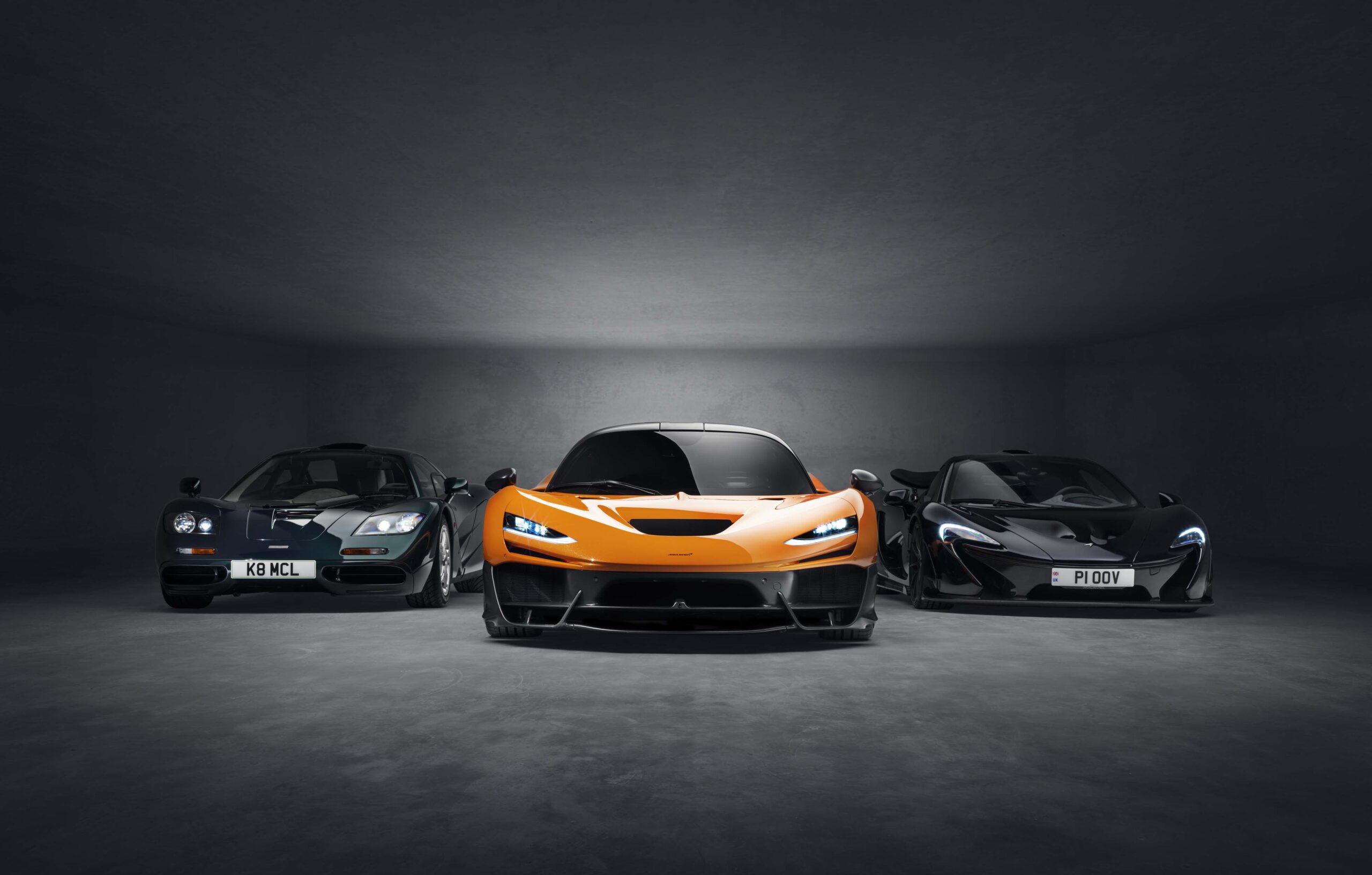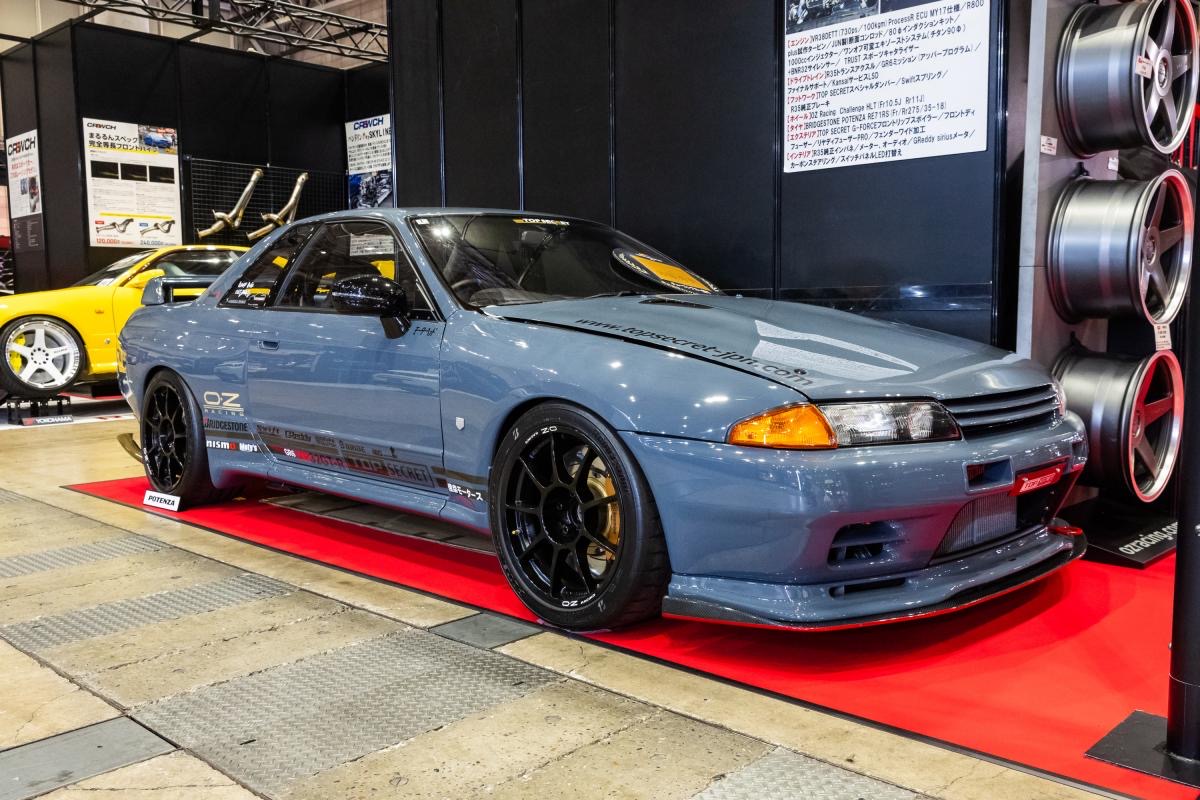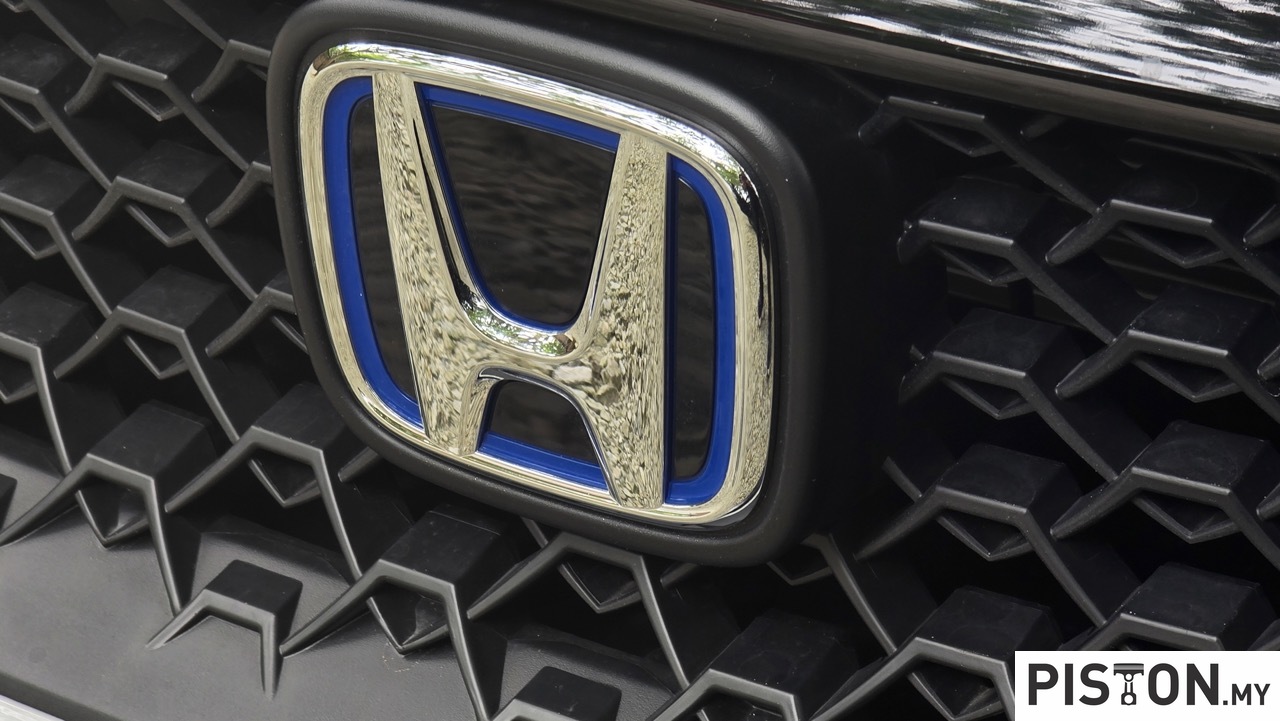BMW Malaysia has expanded its high-performance portfolio with the official introduction of the New BMW M2 Coupé at the MY BMW World 2025 exhibition. The latest iteration of the celebrated compact sports coupé arrives with heightened power, sharper styling, and a suite of refinements, reaffirming its status as the most purist model in the BMW M line-up.
As part of a broader showcase spotlighting the full breadth of BMW M engineering—including the unveiling of the all-new electrified BMW M5, the track-ready M4 Competition Coupé M xDrive, and the versatile M3 Competition M xDrive—the new M2 stood out for its raw appeal, compact proportions, and driving purity.
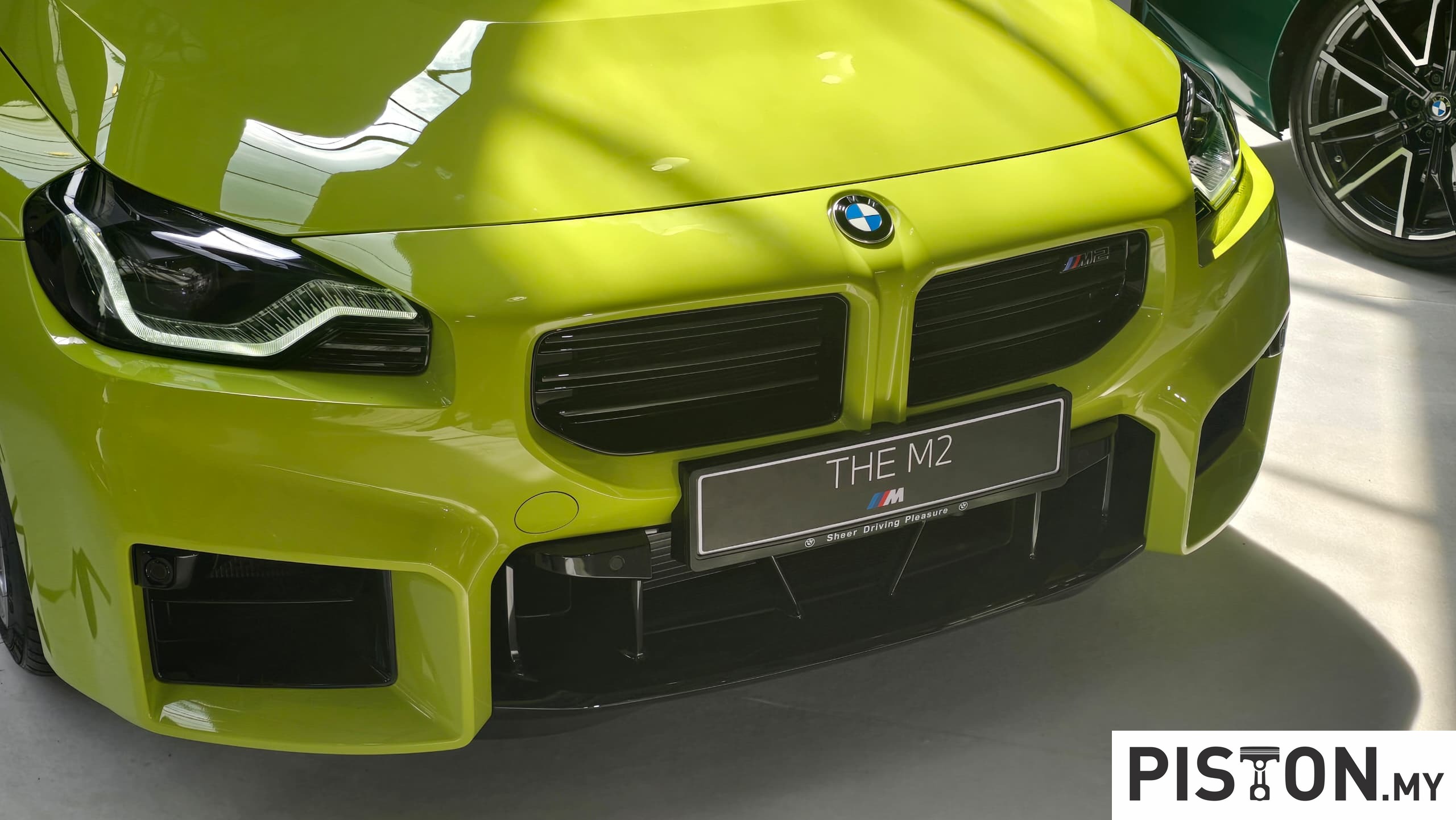
The New BMW M2 retains its aggressive and unmistakable form, now sharpened with subtle visual updates. The wide kidney grille and prominent air intakes remain, enhanced by the addition of Adaptive LED Headlights with Matrix functionality and High-beam Assistant for improved visibility in varied conditions. Its muscular wheel arches and tight footprint lend a squat, performance-focused posture, underscoring its agility and racing heritage. The black-finished exhaust tailpipes and newly designed M2 badge with a silver border at both ends of the vehicle serve as distinctive identifiers of its M DNA.
The M Carbon Roof and high-gloss Shadowline elements contribute to a low, streamlined silhouette, while the new Double-spoke style 930 M alloy wheels in 19- and 20-inch staggered sizing add to its planted stance. Red high-gloss M Compound brakes provide not only an aesthetic accent but also deliver exceptional stopping power.
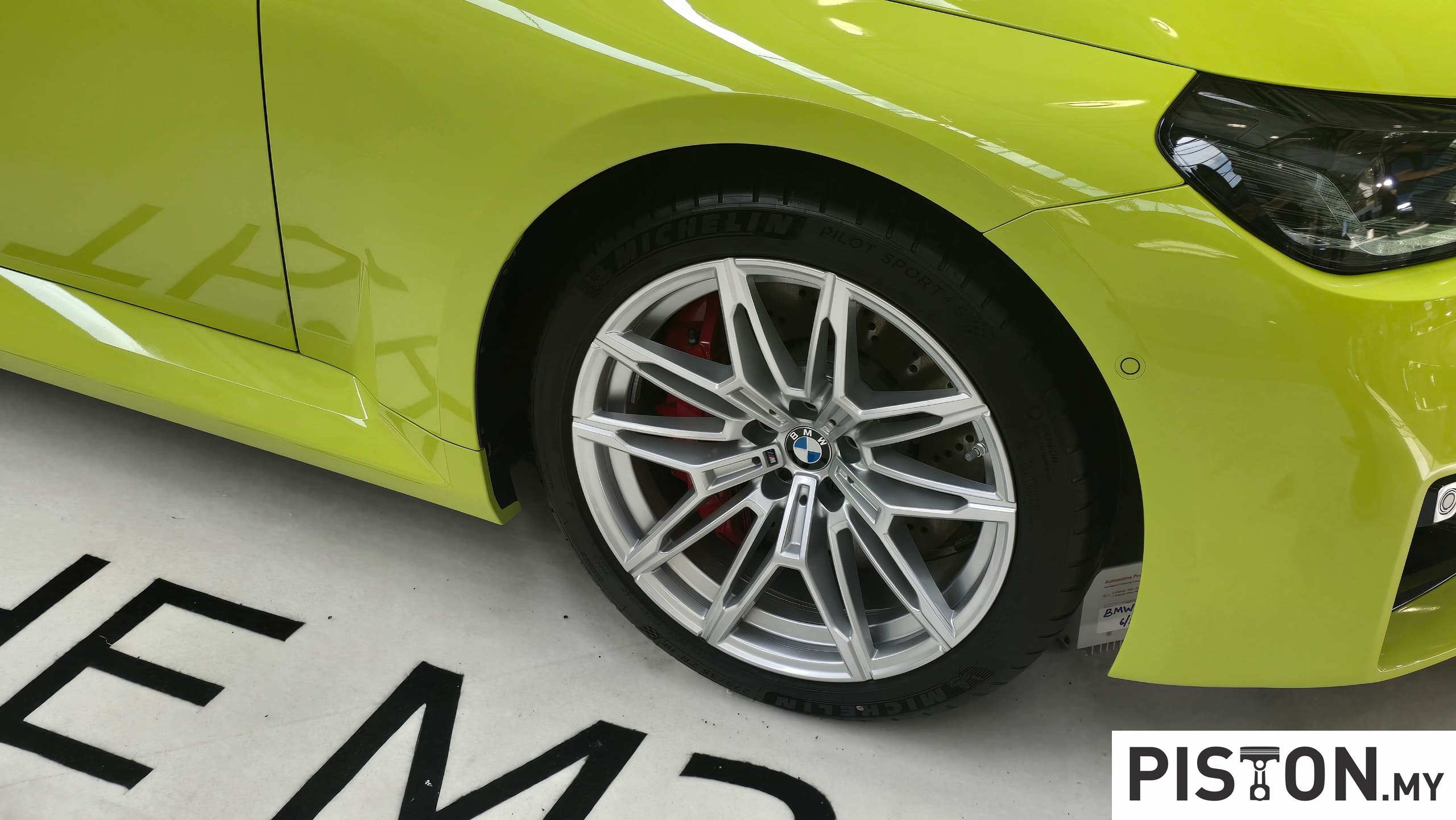
Inside, the cockpit is driver-focused and performance-oriented. A new M leather steering wheel with a flattened bottom, red 12 o’clock marker, and signature M1/M2 mode buttons adds a track-inspired touch. The interior design is dominated by the BMW Curved Display, which houses a 12.3-inch digital instrument cluster and a 14.9-inch central control display running on BMW Operating System 8.5.
This system integrates M-specific graphics and functions, supporting an intuitive and responsive interface. The immersive driving experience is further elevated by the Harman Kardon surround sound system, boasting 14 speakers, a 464-watt amplifier, and nine channels for crisp, dynamic audio.
Additional enhancements include new air vent geometry and Carbon Fibre trim finishers, an anthracite M headliner, galvanic embellishers, and velour floor mats. The luxury instrument panel and M seat belts reflect the car’s attention to detail. The M Sport seats, upholstered in Black Vernasca leather with exclusive highlights, offer electric adjustment with lumbar support and memory function, balancing daily comfort with spirited driving ergonomics. Features such as three-zone automatic climate control and Comfort Access add everyday usability to the high-performance environment.
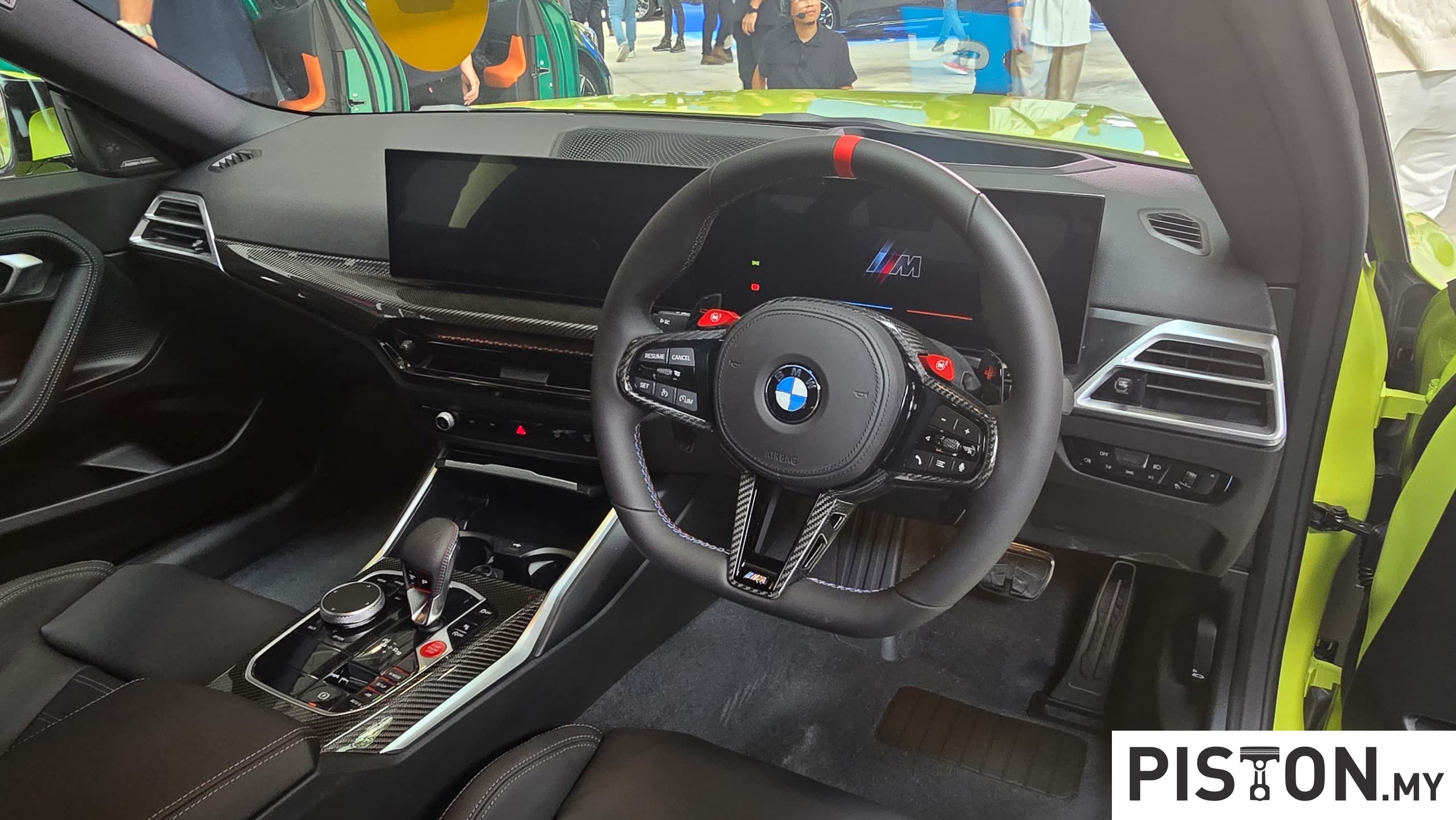
Under the bonnet, the New BMW M2 is powered by a re-tuned six-cylinder in-line petrol engine that now delivers 480hp, an increase of 20hp from the previous version. Torque is channelled through an eight-speed M Steptronic automatic transmission, ensuring smooth yet assertive shifts across all driving scenarios. The car retains a rear-wheel-drive layout, reinforcing its dedication to classic sports car dynamics. The 50:50 weight distribution and compact dimensions make for a highly agile and responsive chassis.
To further enhance driving dynamics, the vehicle is equipped with Adaptive M Suspension, M Sport Differential, and M Drive Professional. These systems allow for in-depth personalisation of handling characteristics, including configurable drive modes, drift analysis, and track telemetry. The throttle mapping and response have been refined for sharper feedback, while the suspension tuning ensures a balance between control and comfort, whether on twisty roads or during urban commutes.
In terms of safety and convenience, the New BMW M2 features Cruise Control with braking function, the comprehensive Driving Assistant package, and Parking Assistant to support tight urban navigation and manoeuvring.
The M2 Coupé is available in a wide selection of paint finishes that reflect its vibrant personality. Choices include striking colours like M Zandvoort Blue, M Sao Paulo Yellow, and the newly introduced Fire Red metallic, which replaces M Toronto Red. More subtle options such as Alpine White, Black Sapphire, Brooklyn Grey, and Skyscraper Grey offer understated elegance. The cabin, meanwhile, is offered exclusively in Black Vernasca leather with bespoke highlights, complementing the car’s sporty yet refined character.
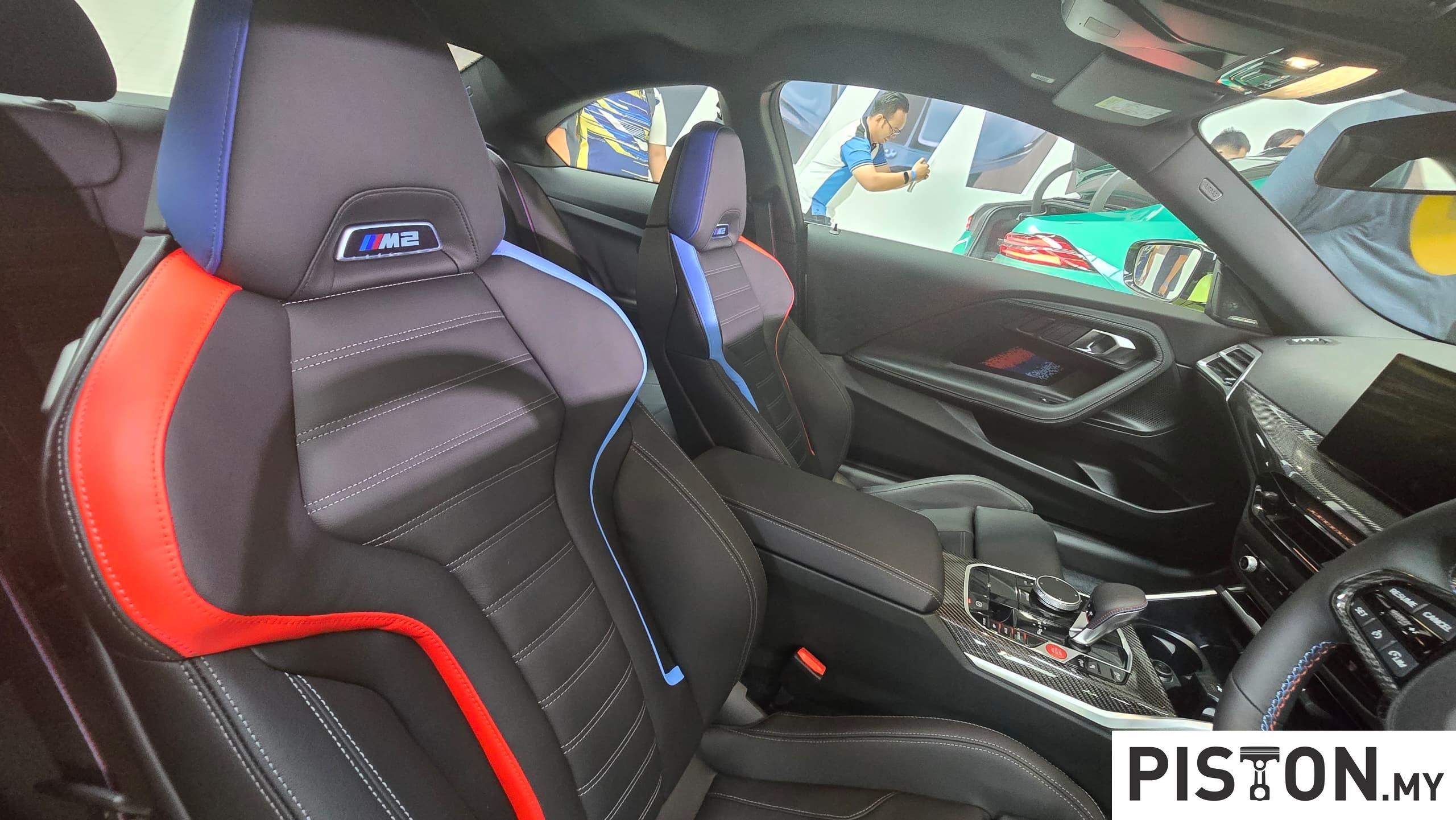
The arrival of the New BMW M2 underscores BMW Malaysia’s continued commitment to delivering high-performance machines tailored to driving enthusiasts. With a blend of purist dynamics, advanced technology, and bold aesthetics, the latest M2 stands as a compelling evolution of a modern driving icon.
The New BMW M2 has a recommended retail price of RM650,800. Additionally, the BMW Service & Repair Inclusive (BSRI) programme ensures peace of mind with a 5-year unlimited mileage warranty, along with 5 years / 100,000km of service coverage. For Battery Electric Vehicles (BEVs), service coverage extends to 6 years with unlimited mileage, while an 8-year high-voltage battery warranty. With BMW Roadside Assistance, customers can receive 24/7 emergency support – including towing, courtesy cars, and hotel accommodation in the event of an unprecedented emergency.





